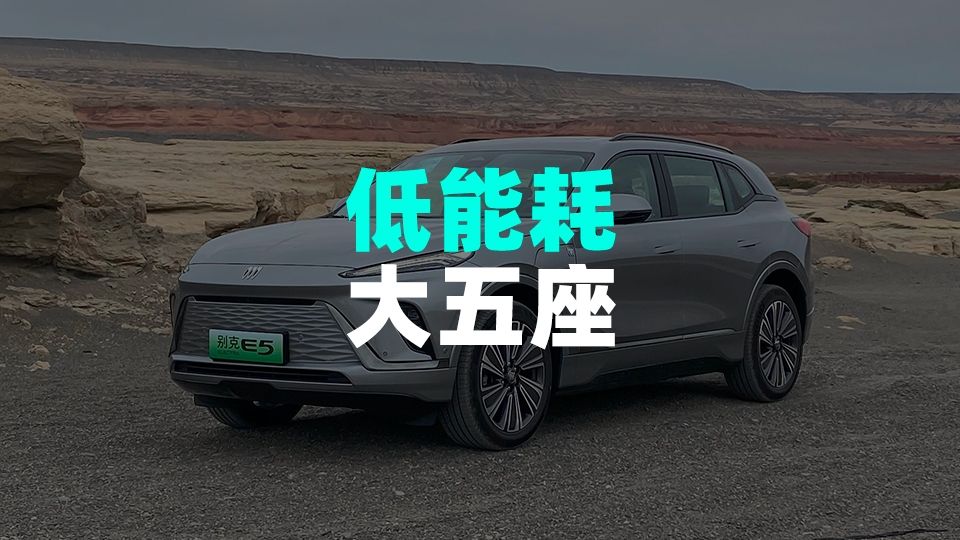The pure electric platform from the GM family, Ultium, has been around for nearly two years, and its first model, the Cadillac Lyriq, has been on the market for almost a year.
Today, our main character is the Buick ELECTRA E5. As Buick’s first Ultium-based model, priced from CNY 208,900, how does it fare in terms of product performance? Will its energy consumption performance bring further surprises? Let me unveil it for you.
Energy Consumption Performance: Changing Public Perception
The test drive took place in Xinjiang, and the vehicle model in question was the Buick ELECTRA E5 Premium Long-Range Edition. In the morning, I set out from the city of Urumqi, passing through the Lianhuo Expressway and finally arriving in Turpan, covering about 200 kilometers in total.
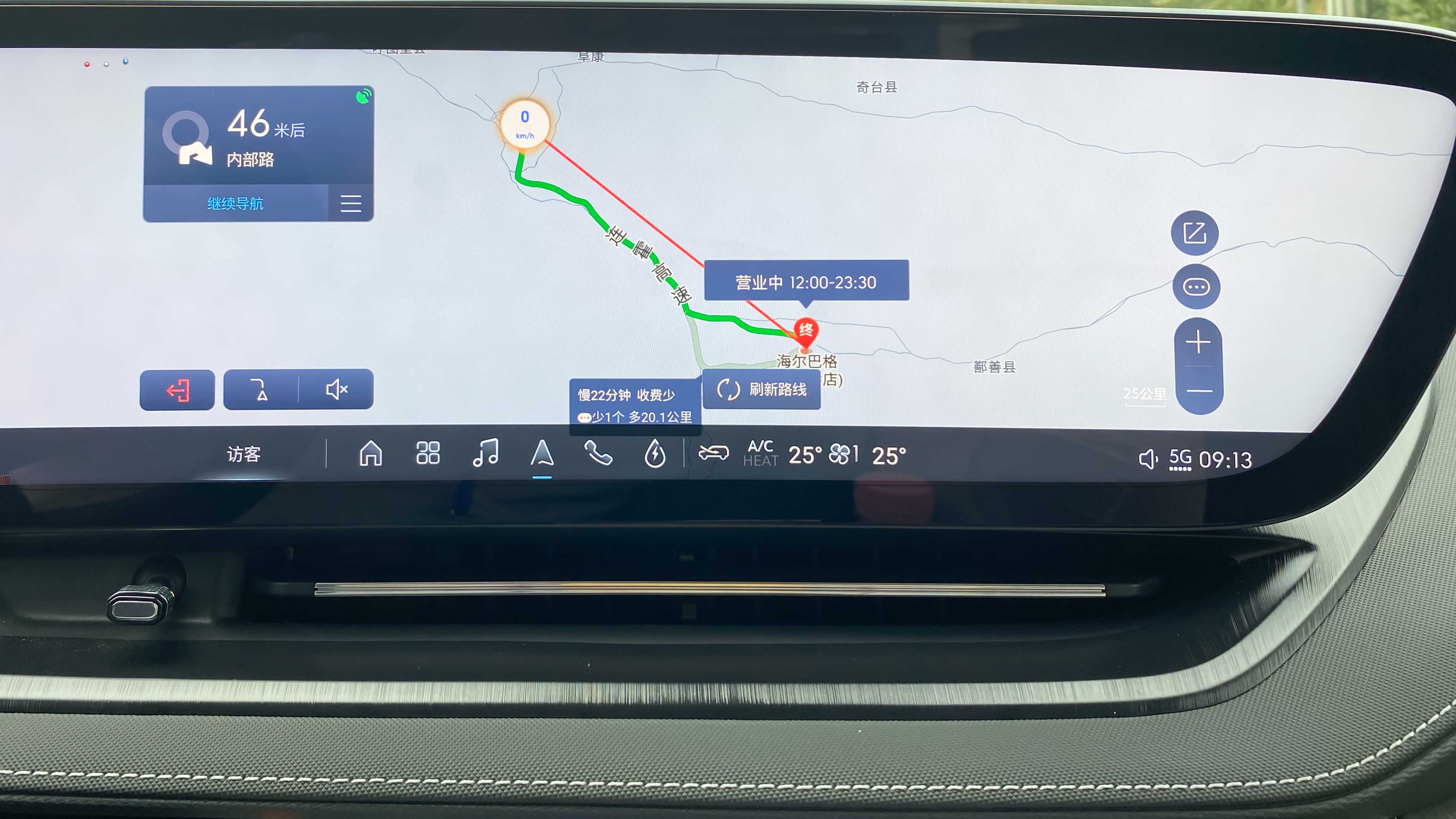
Before departing, I firstly reset all the vehicle’s mileage, the vehicle’s range was 495 km. The temperature in Urumqi that morning wasn’t high, only hitting 20 degrees, so I set the vehicle’s air conditioning to 25 degrees, turned on A/C, and set the fan speed to level 1. Throughout the journey, I used the comfortable driving mode, did not enable the single-pedal function, only used the paddles for energy recovery, and carried 2 people plus luggage in the car.
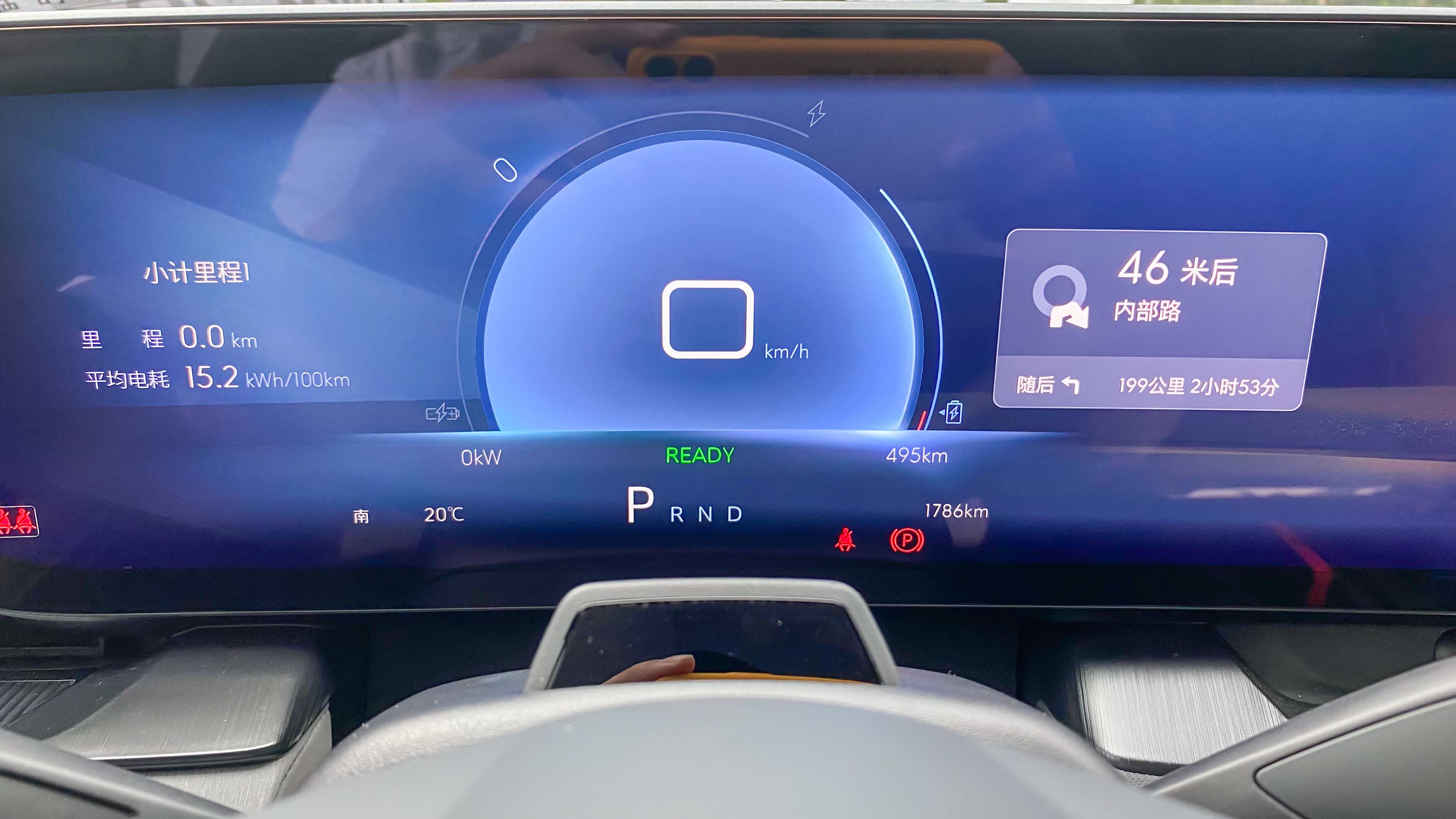
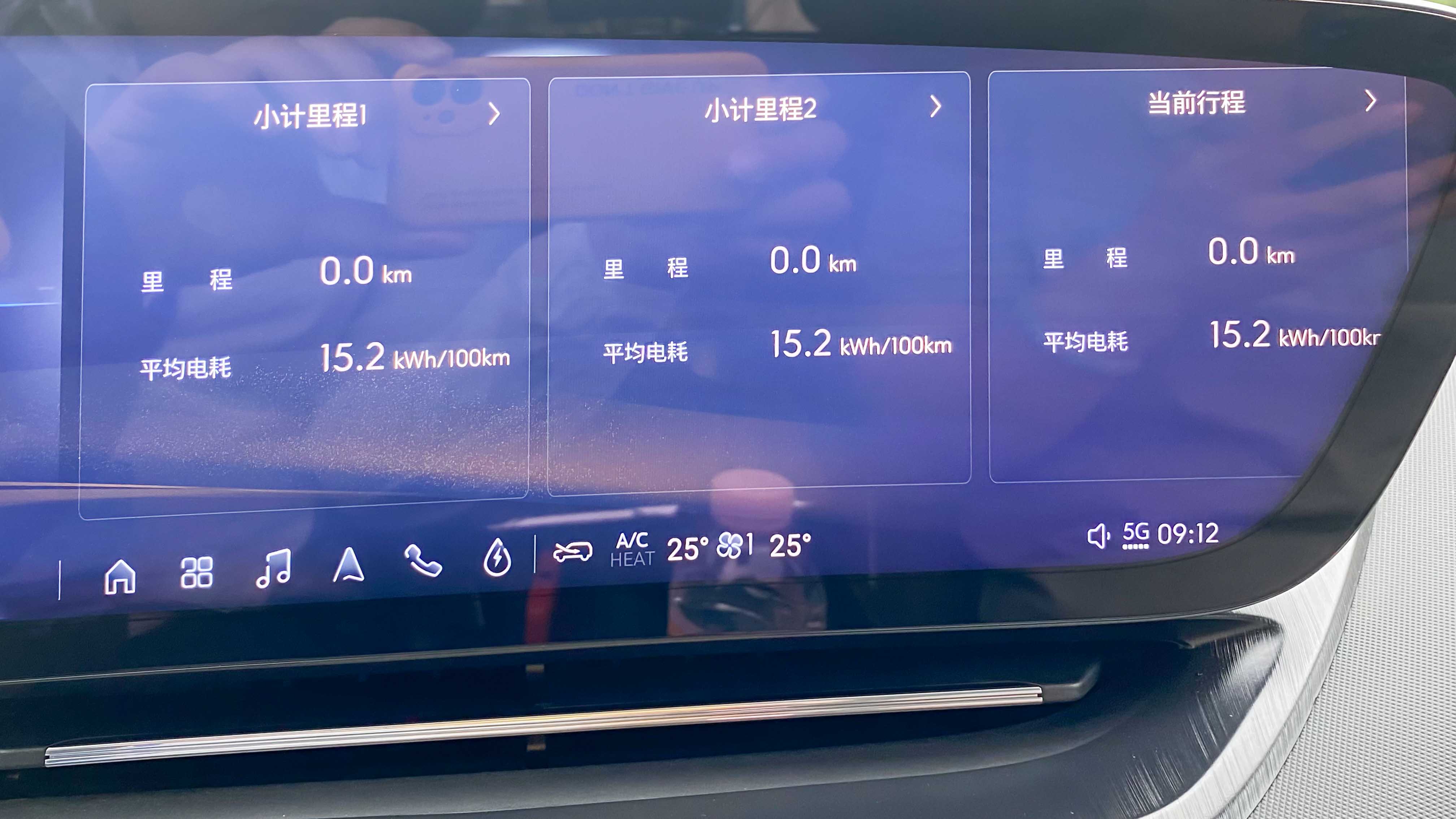
After departing and driving for 134.4 km, I arrived at the Salt Lake service area on the Lianhuo Expressway, a journey that included both roads within Urumqi city and the expressway. At this point, the vehicle’s display indicated energy consumption of only 11 kWh/100 km, a score that can be considered good even for a compact car, let alone a medium-to-large SUV.

After a short break, I continued following the navigation route to Turpan. Along the way, due to Turpan’s hotter weather compared to Urumqi, I adjusted the air conditioning fan speed to level 2. Upon reaching my destination, the displayed mileage was 202.9 km, and the energy consumption was still only 11.2 kWh/100 km.
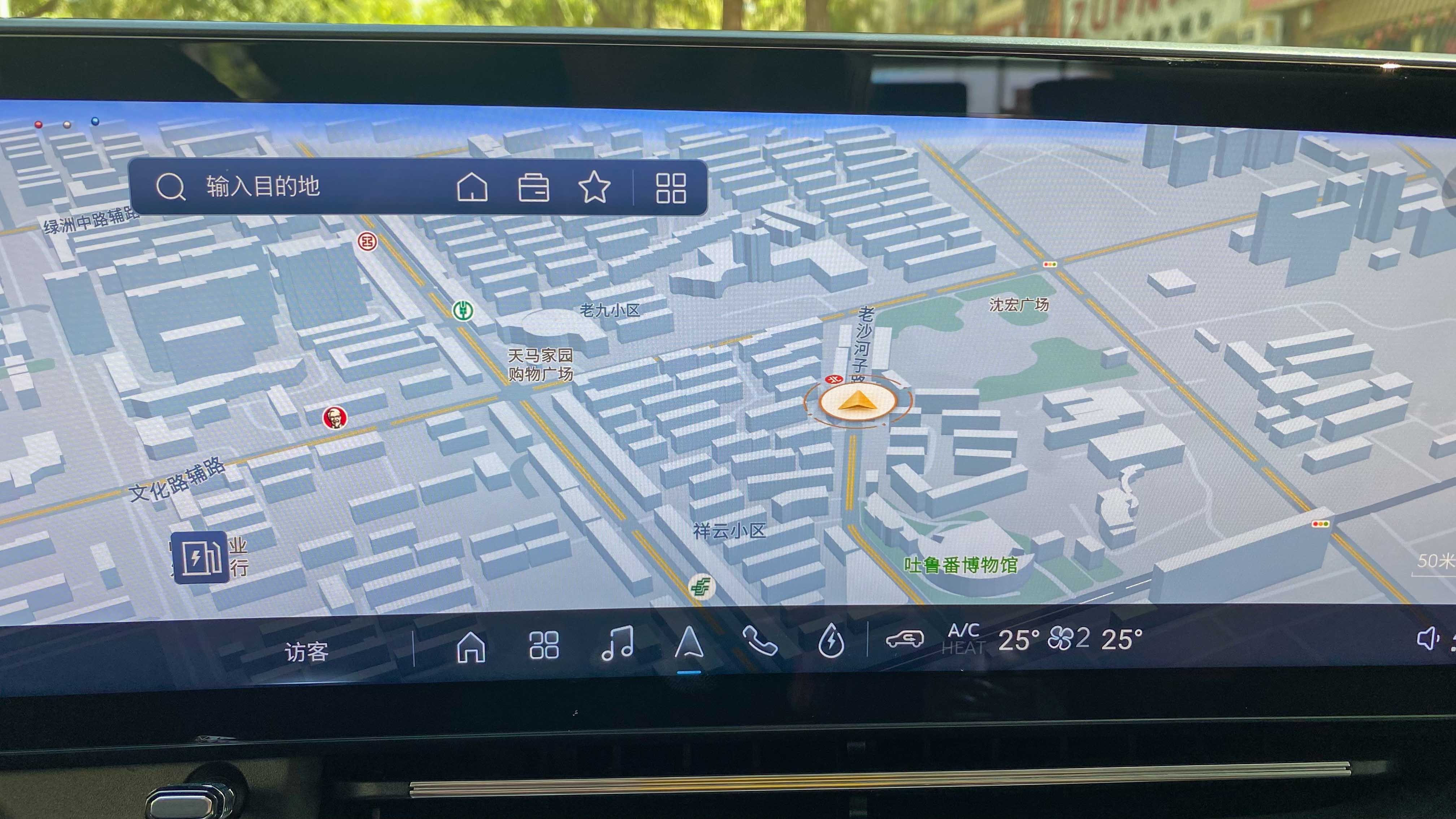
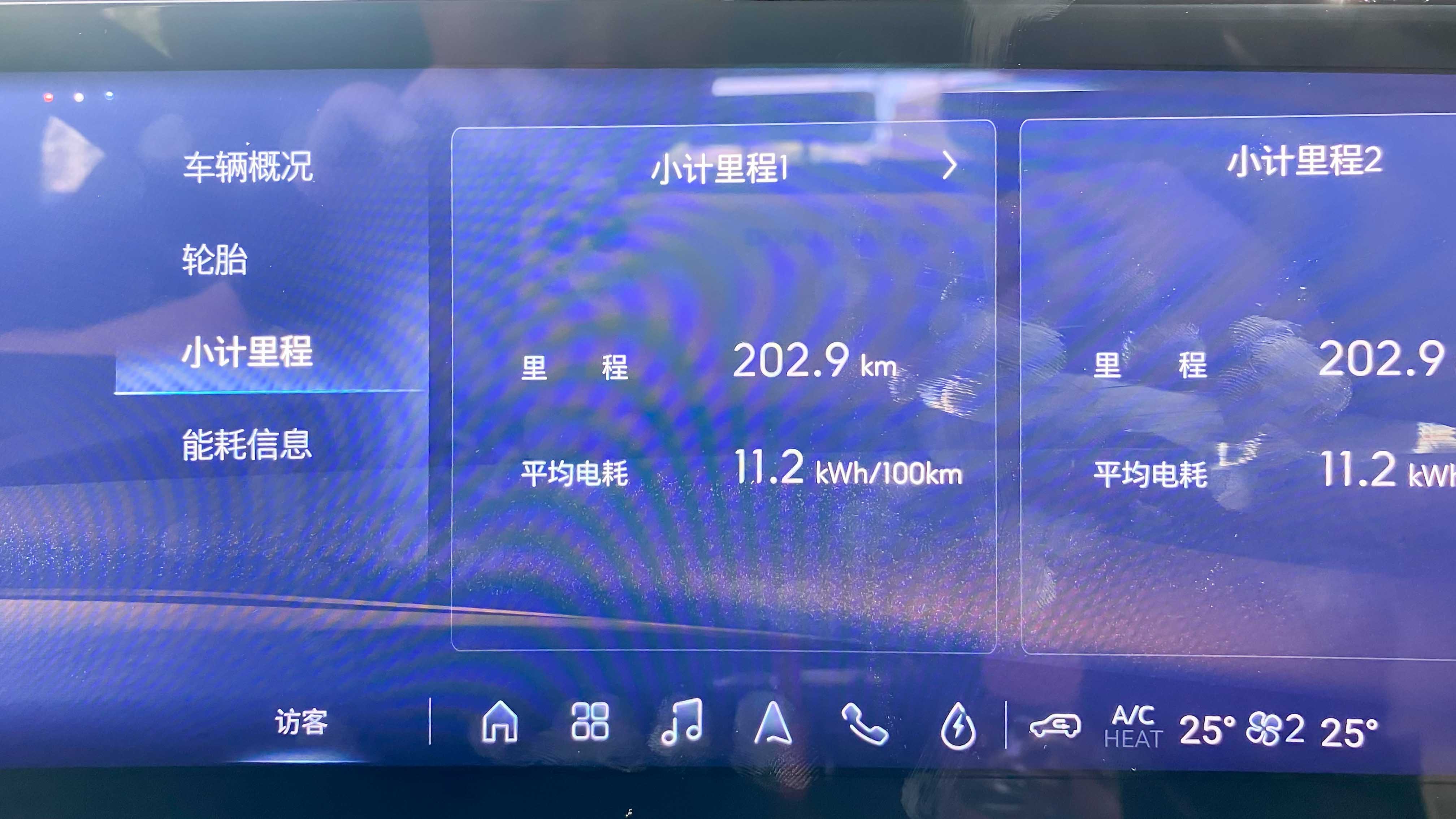
After lunch, the afternoon route involved driving around the suburbs of Turpan, a route more akin to an urban setting compared to the morning. Before setting off, I reset the mileage once again.During the city-round trip, I encountered not only the typical congested sections within the city, but also had to slow down in village sections, national and provincial roads, and a small unpaved section.


In Turpan, the weather became even hotter, so I set the air conditioning to 23 degrees. Also, the open areas of Xinjiang have winds that rival coastal regions, making wind turbines a common sight. When driving through these areas, I had to grip the steering wheel tightly to prevent the crosswinds from causing the car to veer or even flip.

Under these road conditions, we drove a total of 219.3 km in the afternoon. As expected, the average energy consumption rose to 16.3 kWh/100 km. The dashboard also showed that the outdoor temperature had reached 39 degrees.
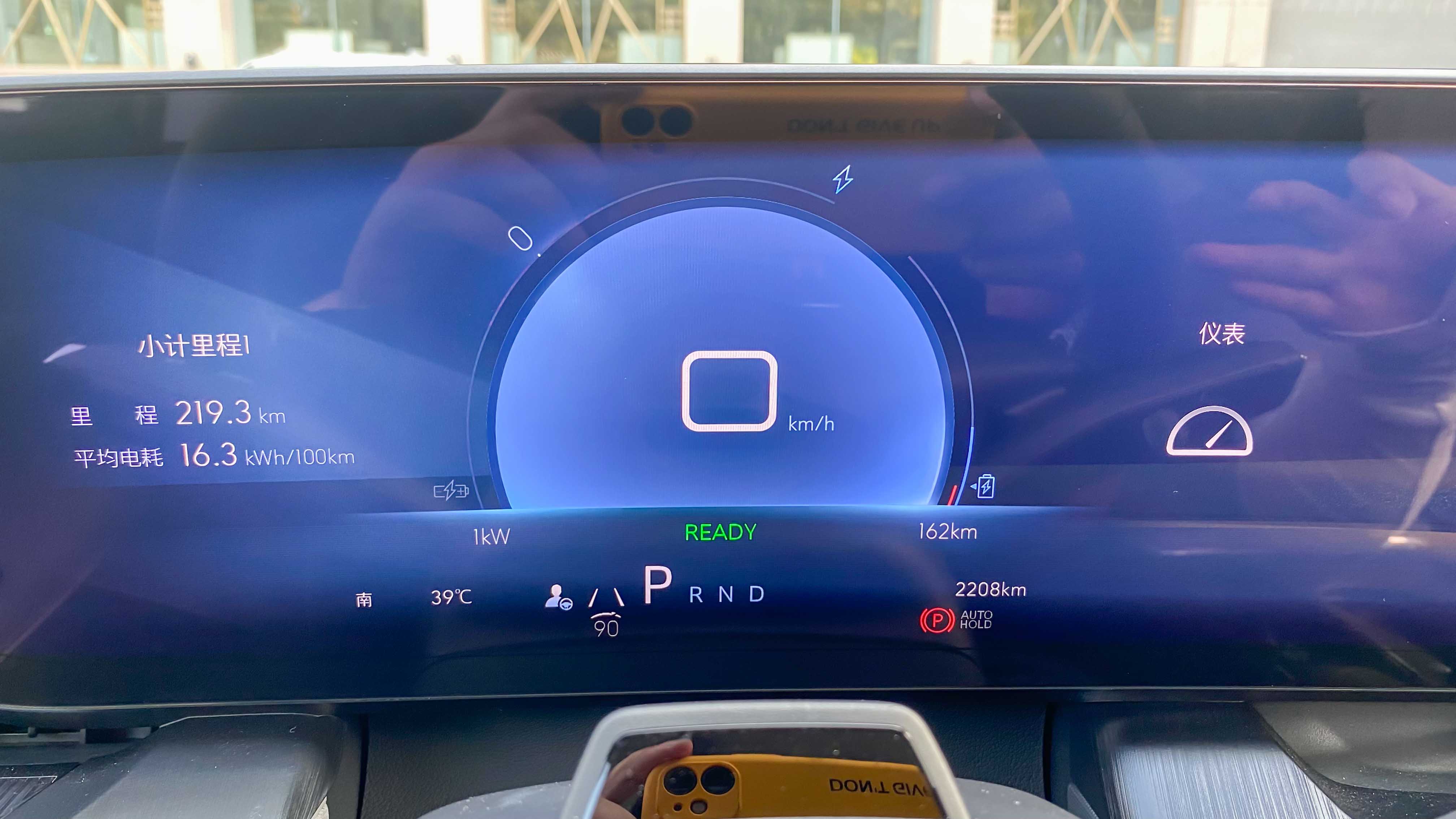
I drove a total of 422.3 km during the day, with an average energy consumption of 13.9 kWh/100 km. Based on the starting range of 495 km and the remaining range of 162 km upon arrival, a total of 333 km of power was lost, which is undoubtedly a reverse false mark. Surprisingly, the actual range of the Buick ELECTRA E5 Zhen Enjoy long-range version is up to 627.7 km!
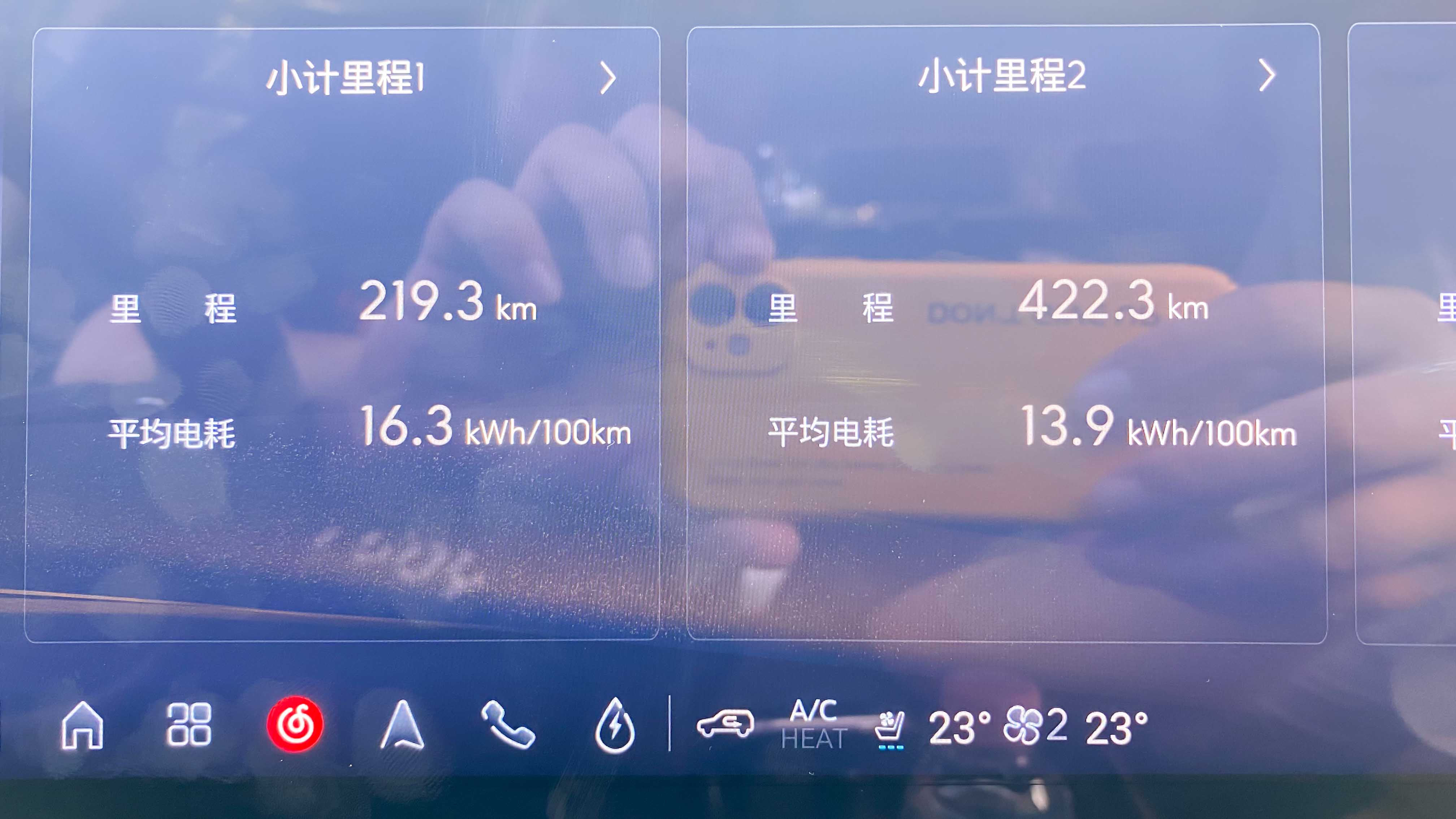
It’s worth noting that the E5 is not an 800V platform model, and its battery capacity is 79.7 kWh, which is just average among mid-to-large SUVs. Its official CLTC range is 620 km. Found it yet? The theoretical actual range of this trip is even higher than the CLTC range!
Admittedly, there were many downhill sections on the first 200 km from Urumqi to Turpan, which gave the car a certain energy consumption bonus. But after all, it was high-speed, and we were always driving against the speed limit of 120. But the last 200 km of the trip, there were congested sections, village sections with pedestrians and non-motor vehicles, and sections of national/provincial roads with strong crosswinds.Under such comprehensive road conditions, the energy consumption of 13.9 kWh/100 km demonstrated by the Buick ELECTRA E5, designed on the Alten platform with a tricyclic system, is extraordinary. In addition to the technology ensuring battery safety, the benefits in energy consumption control mainly come from 2 aspects: The self-developed highly efficient electric drive system and the BEV HEAT dual heat source thermal management system.
The E5’s electric drive system features an 8-in-1 high-integration design, which uses flat wire technology, self-adhesive iron core, and stator spray cooling combined with rotor oil slinging. Not only does this decrease the volume and weight, but it also improves the heat conduction efficiency and enhances the motor’s efficiency. Also, the gear shaft system of the electric drive unit is crafted using gear machining technology and then wrapped in sound-absorbing materials to ensure near silence within the vehicle under various operating conditions.
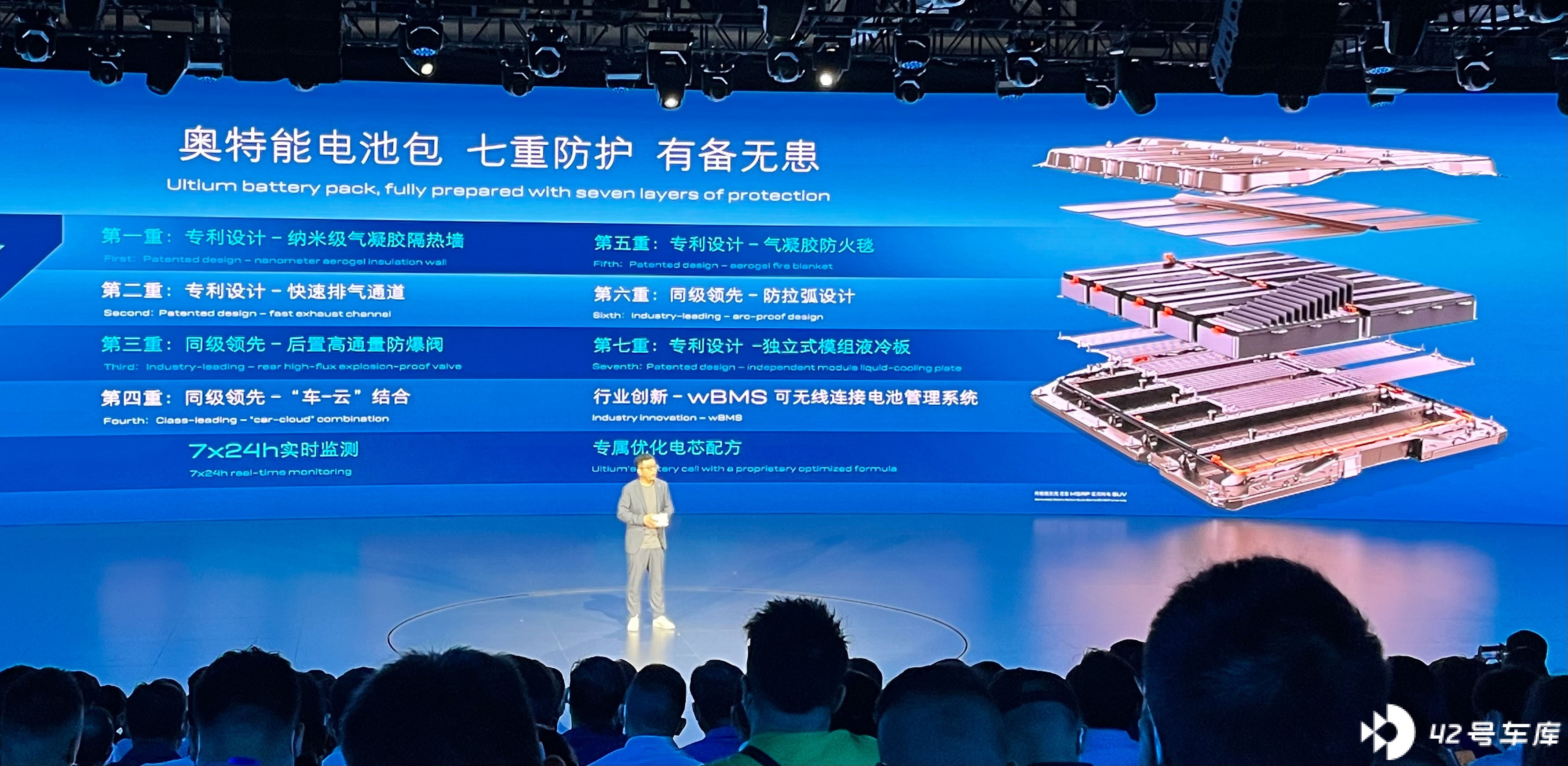
The BEV HEAT dual heat source thermal management system adjusts according to the actual battery temperature, ambient temperature, and cabin air conditioning needs, among other factors. This is accomplished through an 8-way six-port valve fusion-based thermal management system. This effective utilization of heat produced by the vehicle under different conditions reduces the overall energy consumption and enhances the speed of the air conditioning system for a better interior experience. In winter, the vehicle can utilize the charging pile to preheat the battery, significantly increasing its mileage.
With custom-recipe 811 positive electrode materials, exclusive anode formula anti-degradation, 100% DC internal resistance testing of the battery cell, and a car-cloud combined battery health monitoring system, the vehicle’s range and battery life are ensured from various aspects. Even without the full high-voltage platform, it can still achieve an energy consumption performance to match.
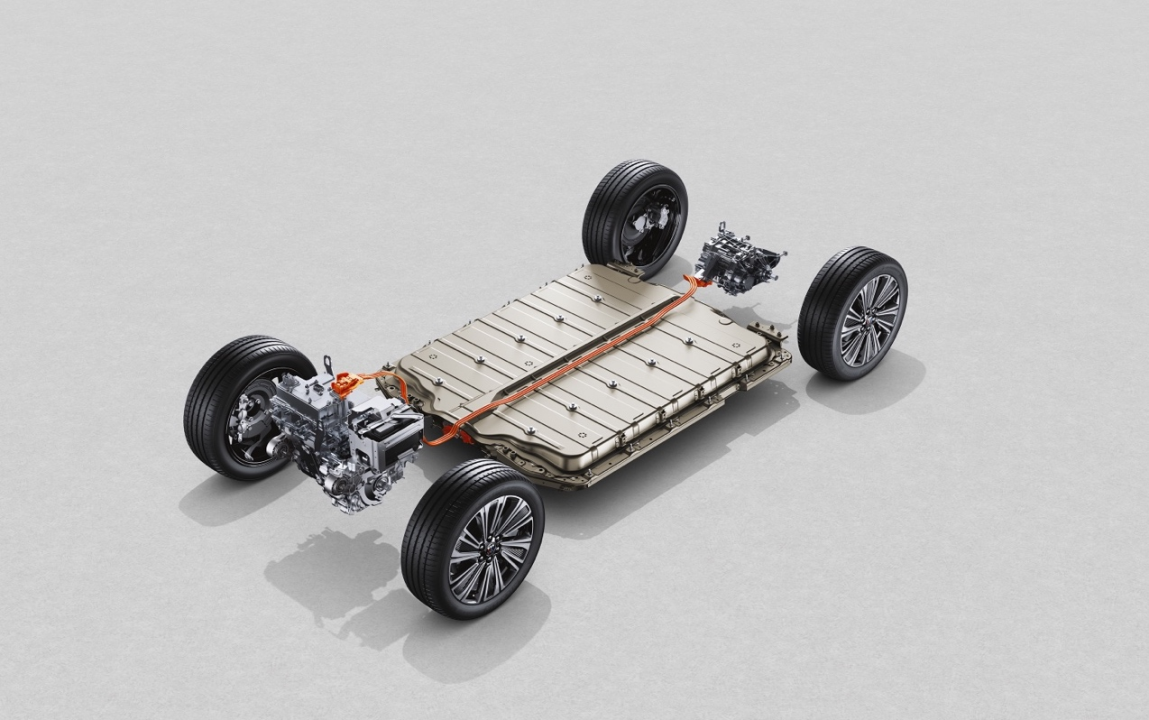
Dynamic Driving: It’s All About Comfort
The hardware specs related to Buick ELECTRA E5 Extended Range Premium’s power are as follows:
- Equipped with a front-wheel-drive permanent magnet synchronous engine with a maximum power of 150 kW, maximum torque 330 N·m, with a 0-100 acceleration of 8.6s.
- Suspension with a combination of MacPherson strut and five-link rear.
Most people, probably, will not have any driving expectations from the car with these aforementioned specs; nowadays, even a single-engine model with an acceleration power of 7 seconds is quite common.
Don’t forget, however, about the product positioning of the Buick ELECTRA E5—A spacious and refined five-seater, all-electric SUV. Families probably wouldn’t appreciate your aggressive driving. Comfort is what counts. So, how has Buick turned this vehicle into a comfort-oriented mode of transport?
Naturally, let’s start with the suspension. Many people believe that softness is the exclusive standard for a comfortable suspension. However, this is not entirely correct. Excessive softness can cause the vehicle to wobble excessively when passing bumpy roads, causing discomfort and even motion sickness for the passengers. Hence, it is one of the problems common in some MPVs.The suspension of the Buick ELECTRA E5 showcases the tuning proficiency that General Motors has garnered over many years of vehicle manufacturing. Not only is it able to filter out almost all minor vibrations from the road, but also swiftly secure the vehicle body when encountering larger undulations; limiting vehicle jounce to a single instance. Thus, unlike many vehicles with overly soft suspension, when facing a continuously undulating road surface, it does not produce the pronounced sensation of abrupt ascension and descension, or what is often referred to as an ‘in-flight’ feeling.
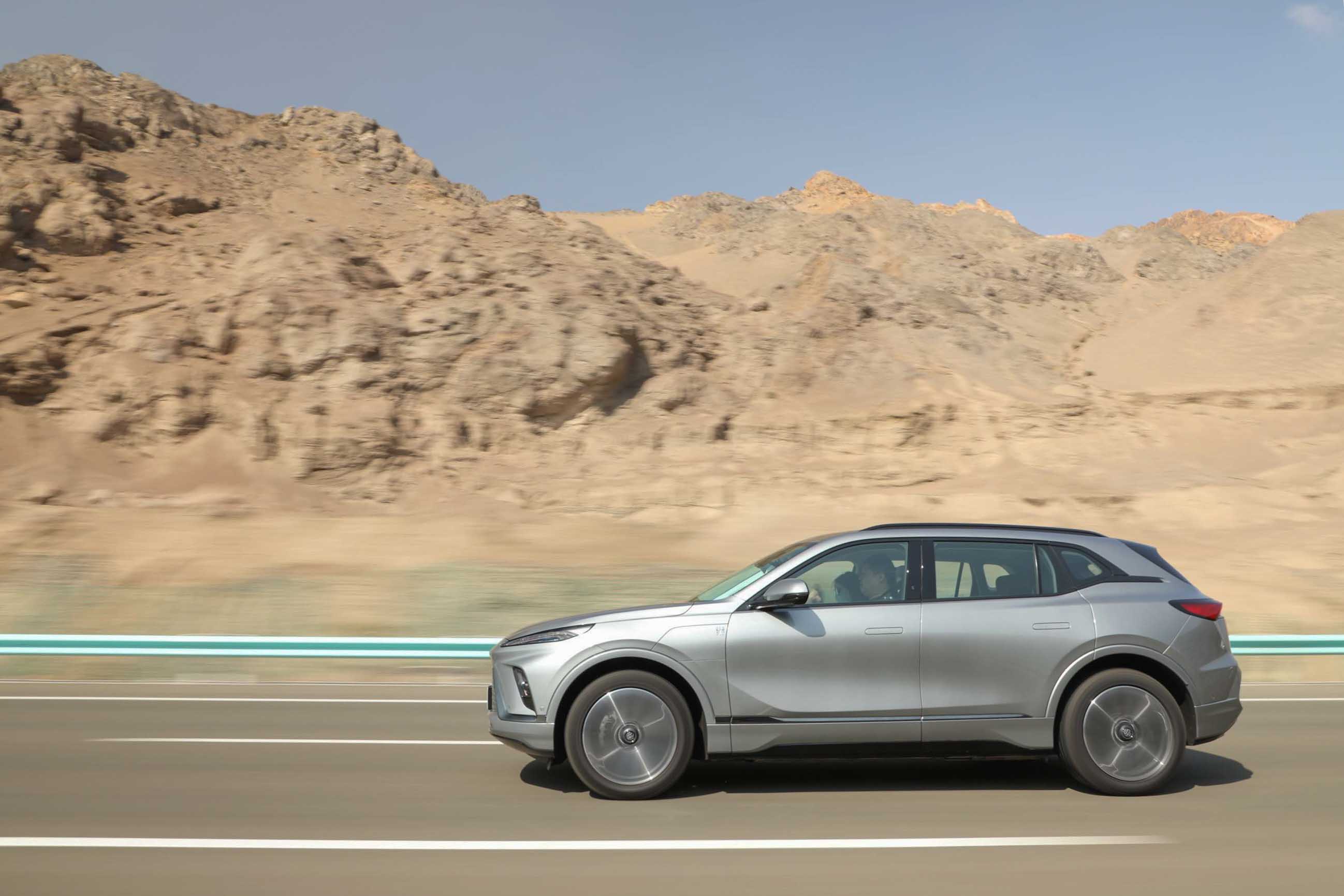
In Xinjiang villages and provincial roads, speed bumps are a common occurrence. If the vehicle has a sports orientation, a firm suspension would make passing over these speed bumps quite uncomfortable. Yet, when the Buick ELECTRA E5 encounters most speed bumps, regardless of whether it is traveling slowly or quickly, only slight road feel is conveyed. However, the rebound is rather crisp, with a touch of sophistication. There was even an instance when I overlooked a speed bump and passed over it at a speed of 60 km/h; the vehicle did not bounce.
While the 0-100 km/h acceleration of the E5 isn’t fast, its 0-50 km/h acceleration time is only 3.5 seconds, which is on par with most single-motor SUVs. This means that overtaking during city driving isn’t a problem. I’ve successfully passed slower vehicles moving at 50 km/h multiple times, using comfortable mode for acceleration.
In comfortable mode, the vehicle’s power gradually builds up when the accelerator pedal is fully depressed, creating a very linear experience. Such smooth driving ensures that other passengers in the vehicle do not feel any discomfort. With single pedal mode off, the vehicle will continue to glide upon releasing all pedals, which is essentially consistent with a gasoline car. A linear braking force that meets expectations can be acquired when the accelerator pedal is pressed down.
Though I’d never driven this vehicle before, the excellent pedal tuning enabled me to adeptly manipulate the car after merely a couple of traffic light junctions.
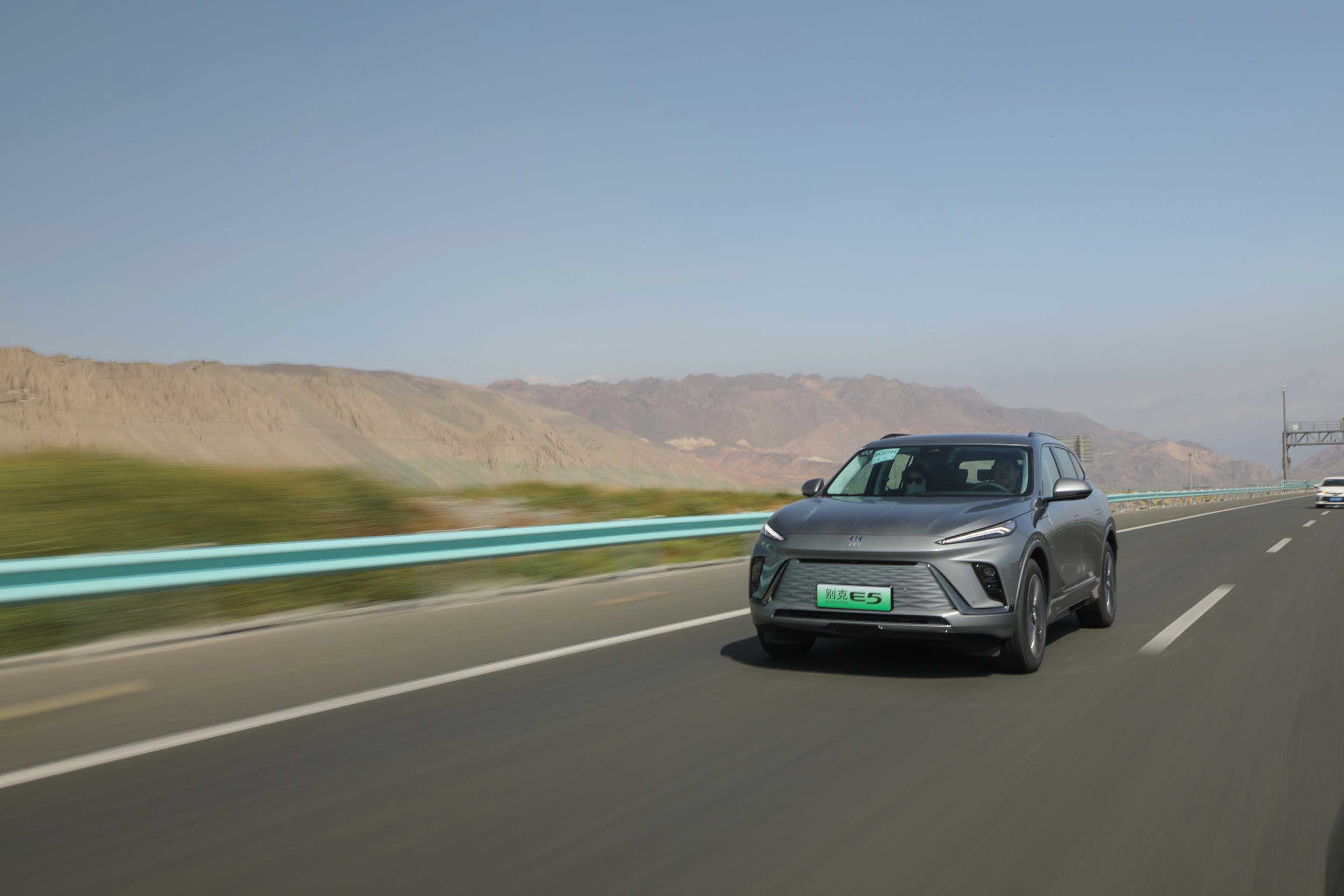
The E5 has four driving modes: comfortable, sporty, anti-skid, and.my mode. In ‘my mode’, drivers can customise power response, braking feedback, and steering assistance.
Single pedal mode has three adjustable energy recovery grades, and is off by default, perhaps to accommodate users transitioning from gasoline vehicles. After turning it to standard, the vehicle will significantly decelerate when the pedal is released, and can come to a full stop while automatically activating the parking brake. Unlike some cars’ single pedal mode needs an additional brake to stop the vehicle.
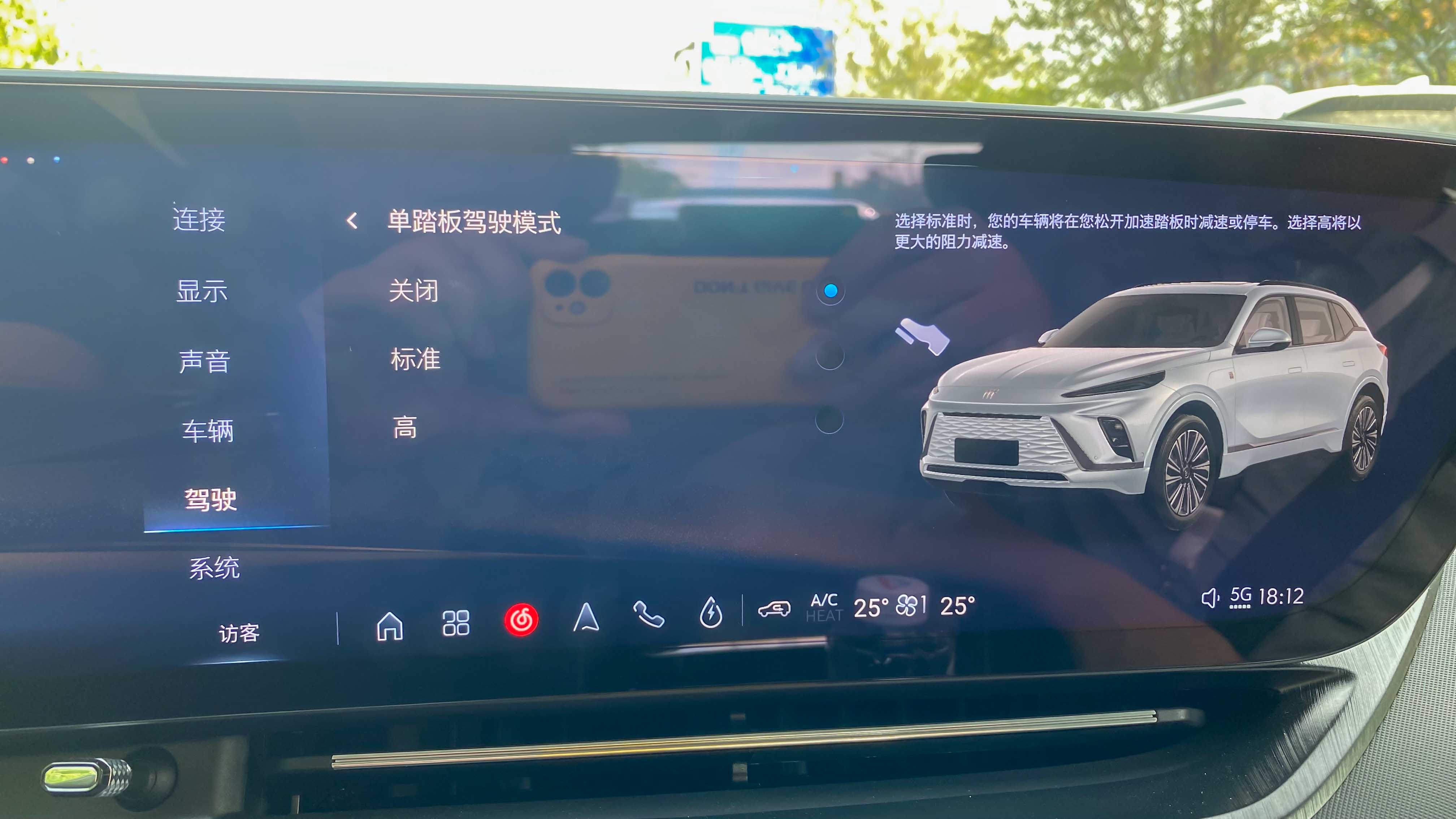
The design of the steering wheel is essentially the same as Buick’s gasoline cars, and I find its thickness just right. There are two adjustable grades for the steering assistance within the system. I’m more accustomed to the sporty mode, which has a moderate restoring strength. If it is a woman driving, the comfortable mode may be more preferable.Those who have driven the Cadillac Lyriq, produced by SAIC GM, will be familiar with the paddle on the left side of the steering wheel, which is used to control the vehicle’s power recovery. However, unlike the Lyriq, the Lyriq’s paddle, similar to the accelerator and brake pedals, has a long section: the more you press, the stronger the power recovery. It can achieve a deceleration effect almost equivalent to the brakes, making it a true “handbrake”.
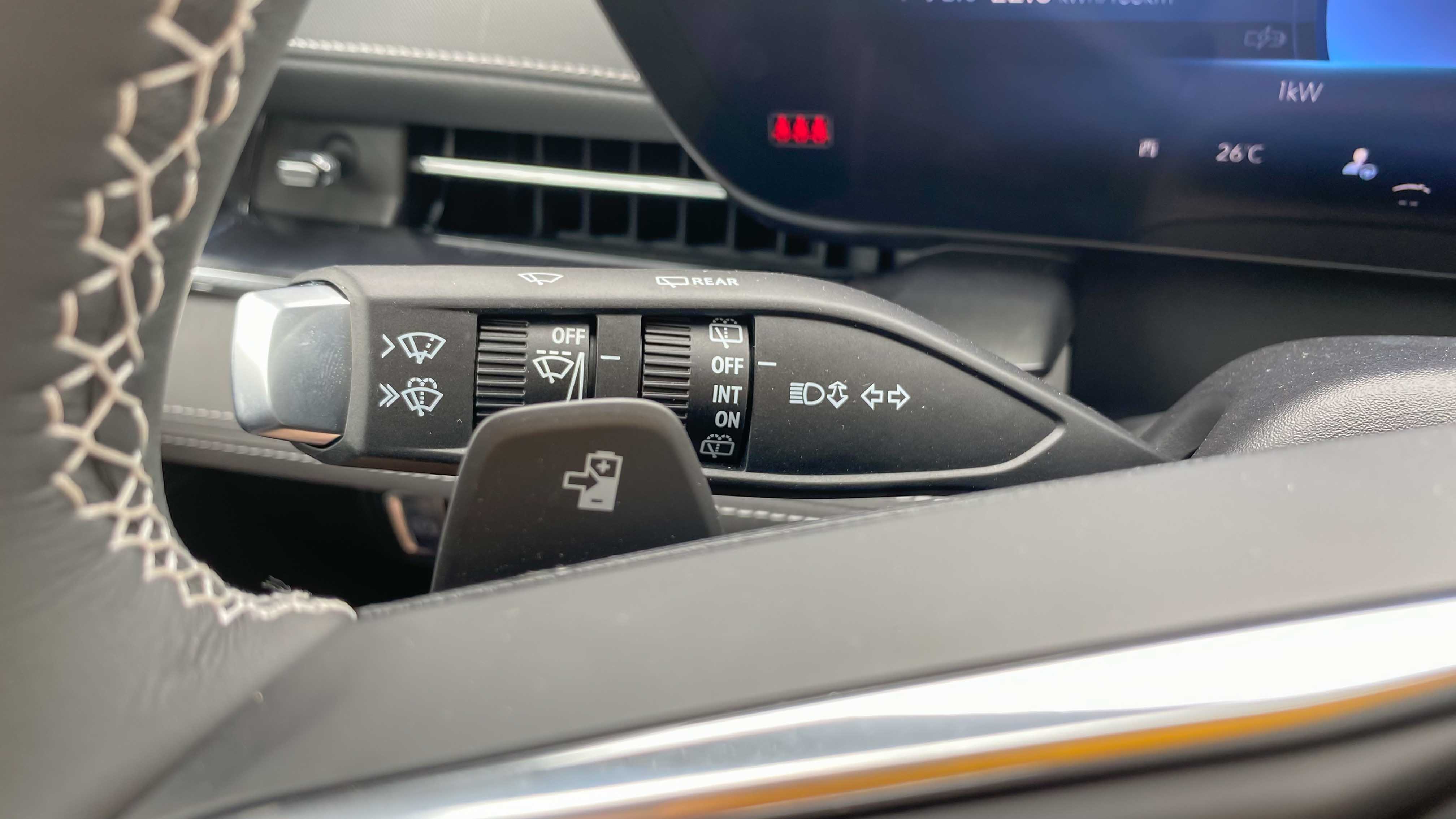
On the other hand, the E5’s paddle feels the same as the other buttons, with only two states: press and release. After pressing, there will be a certain deceleration effect and it can decelerate to 0 km/h, but the deceleration force is evidently not as strong as the foot brake. Therefore, it is important to remember to use the foot brake when encountering emergencies. Having driven it for two days, I found the most frequent use cases to be deceleration and stop in front of traffic lights and following other cars at medium and low speeds, where I could decelerate with a finger without moving my feet-it’s quite a fresh experience!
On the right is the gear shift lever, unique to the E5, which requires pulling the lever inward before shifting gears.
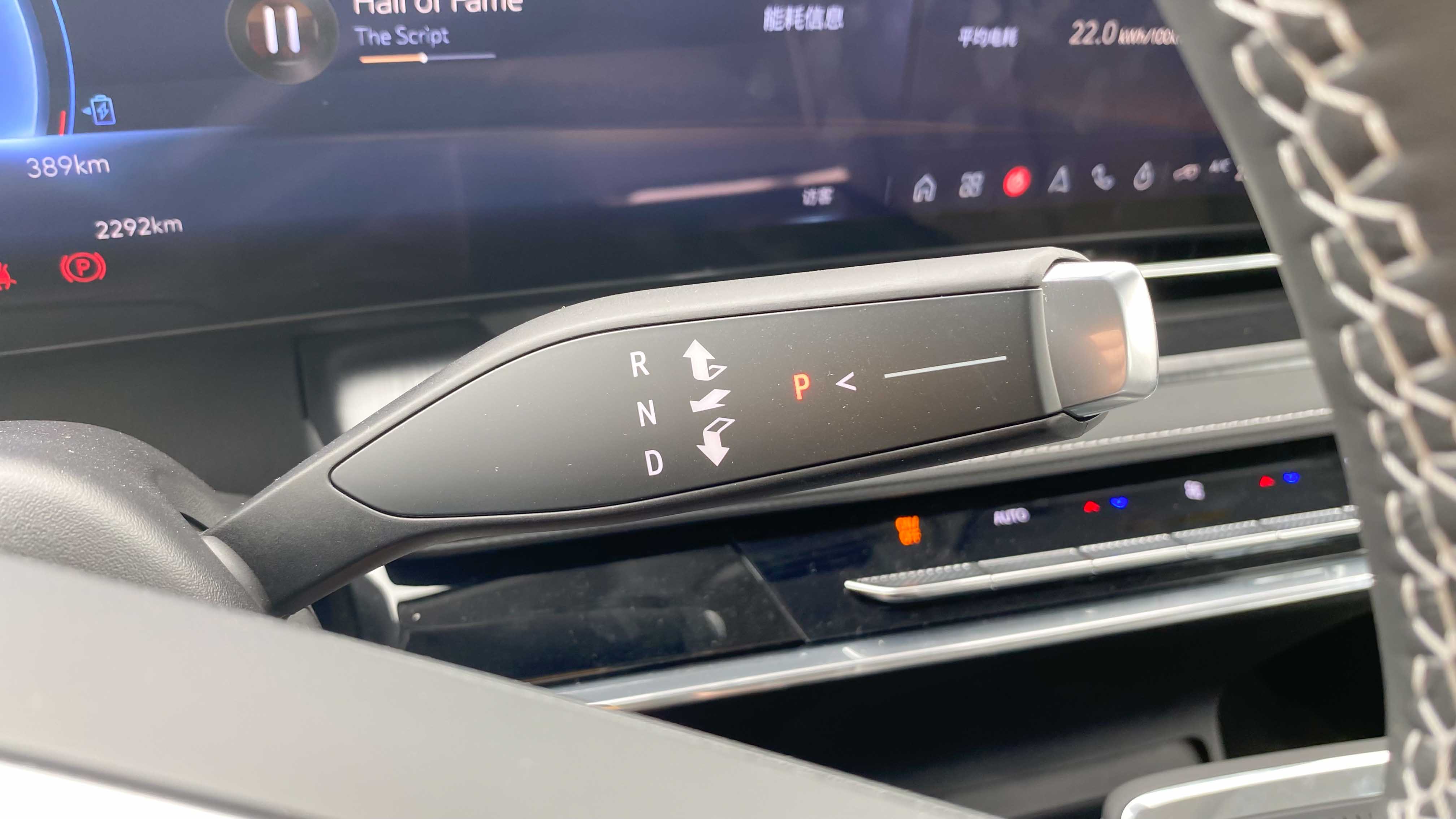
The system also supports turning off the vehicle’s traction control and stability functions. However, as a family SUV, it is not recommended to do this.
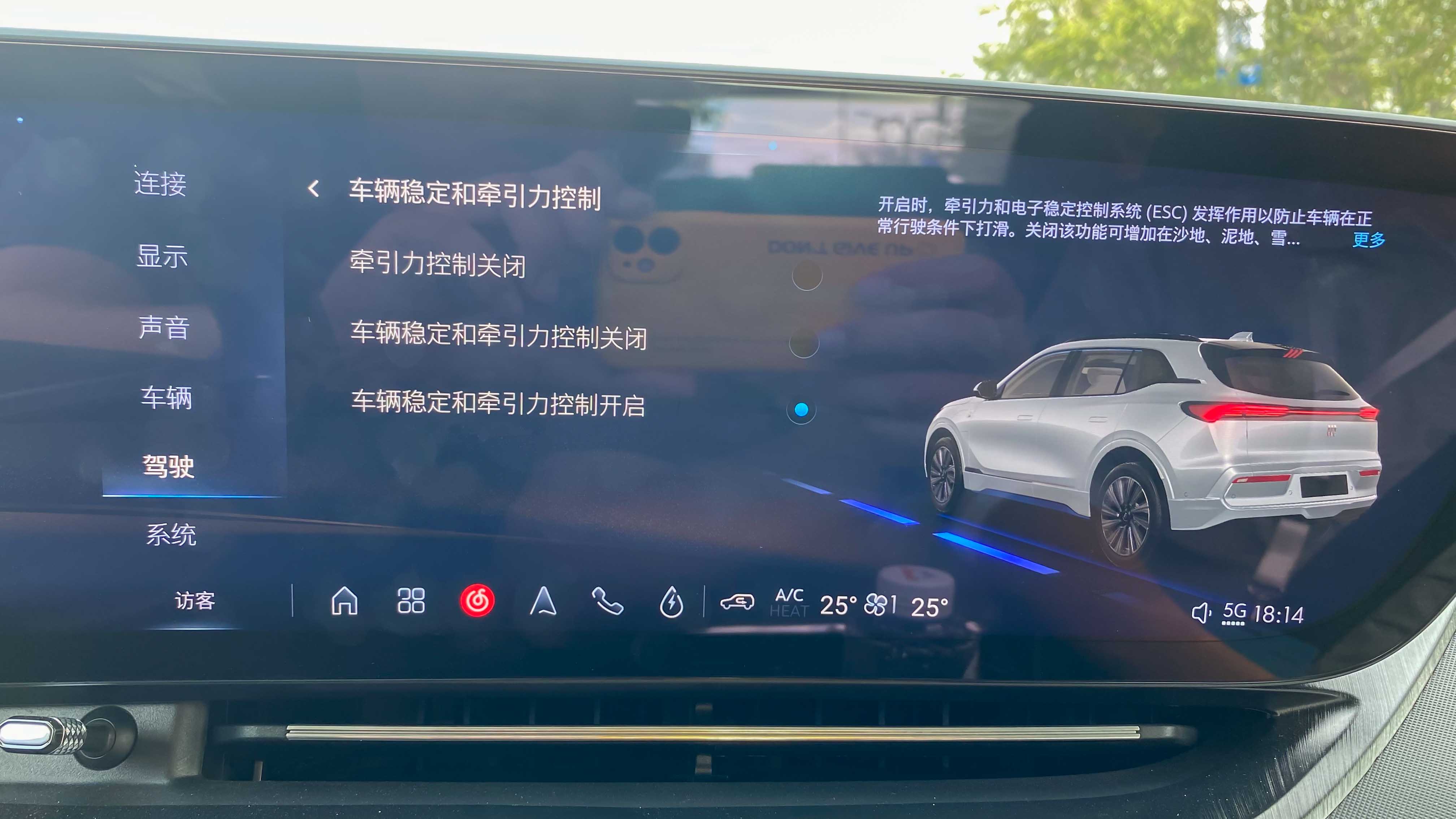
Finally, let’s talk about this car’s assistance driving functions. It must be stated upfront that this test car did not have the Super Cruise function turned on, but it did possess lane-keeping. After the vehicle detects the lane lines, you can activate the lane-keeping function at the current speed by clicking the SET button on the left side of the steering wheel.
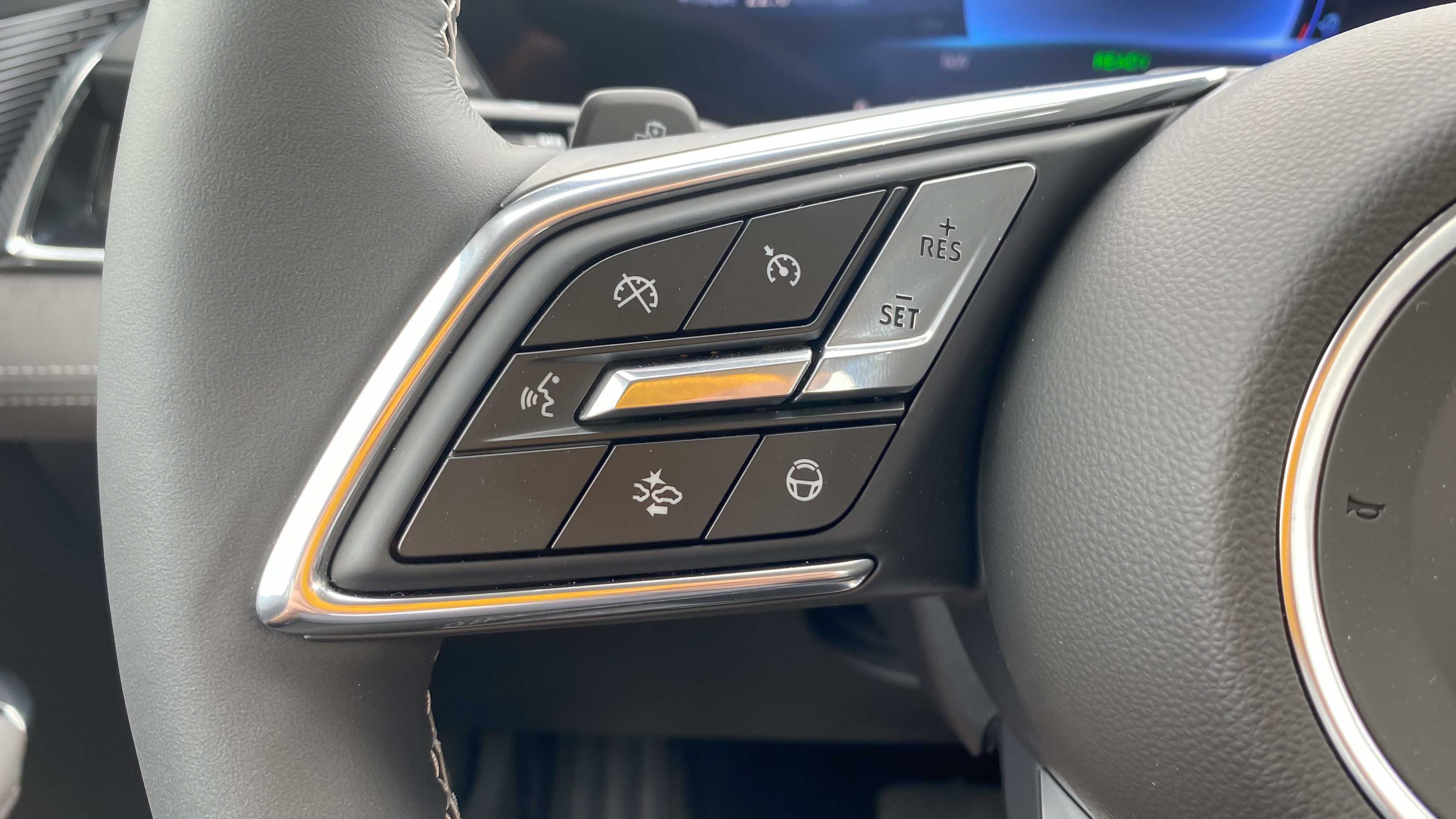
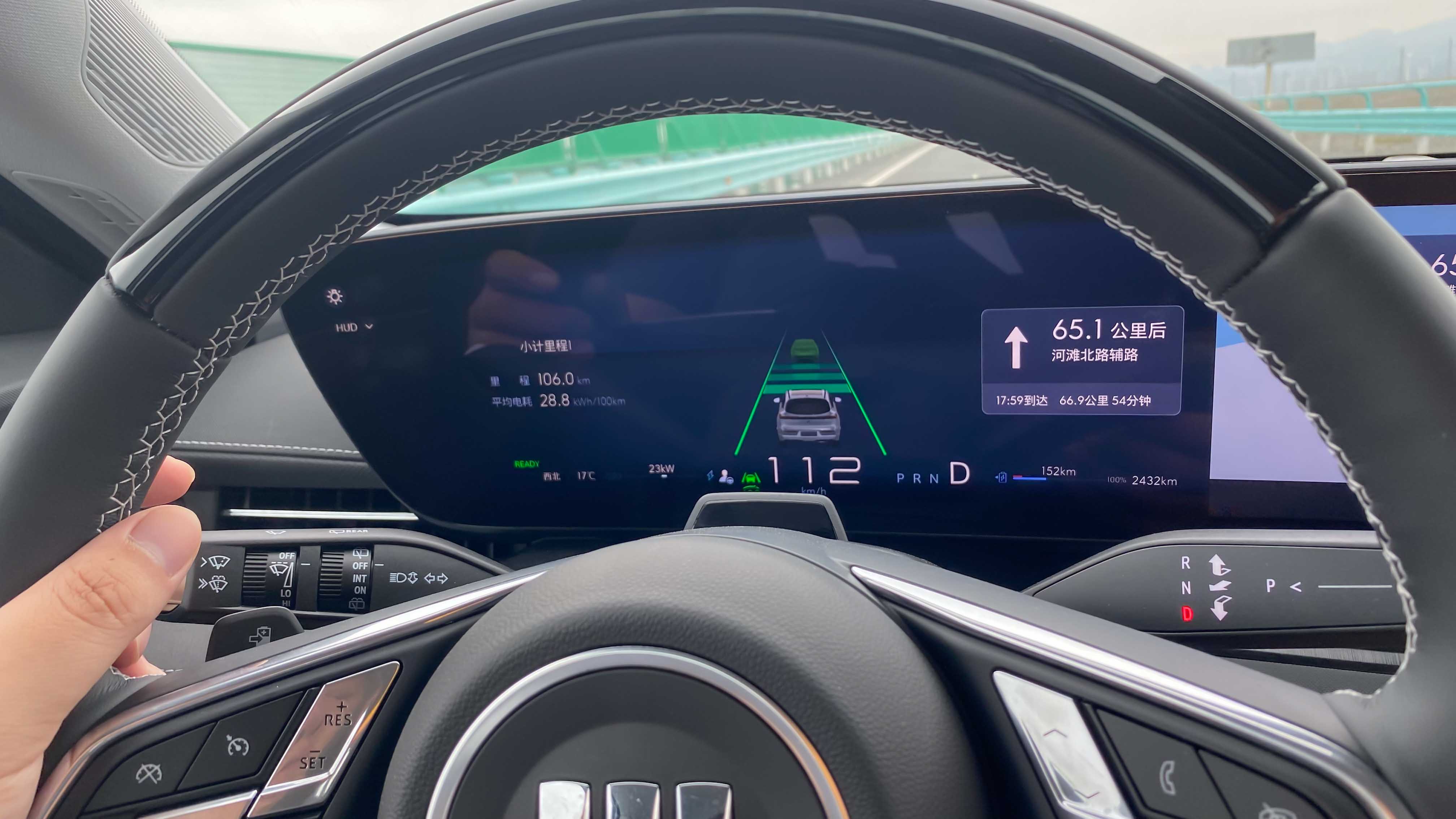
There are 3 adjustable levels for the vehicle-following distance, which will be displayed on both the instrument panel and the HUD when adjusted. The following distance at each level is not fixed but will vary according to the vehicle’s current speed.
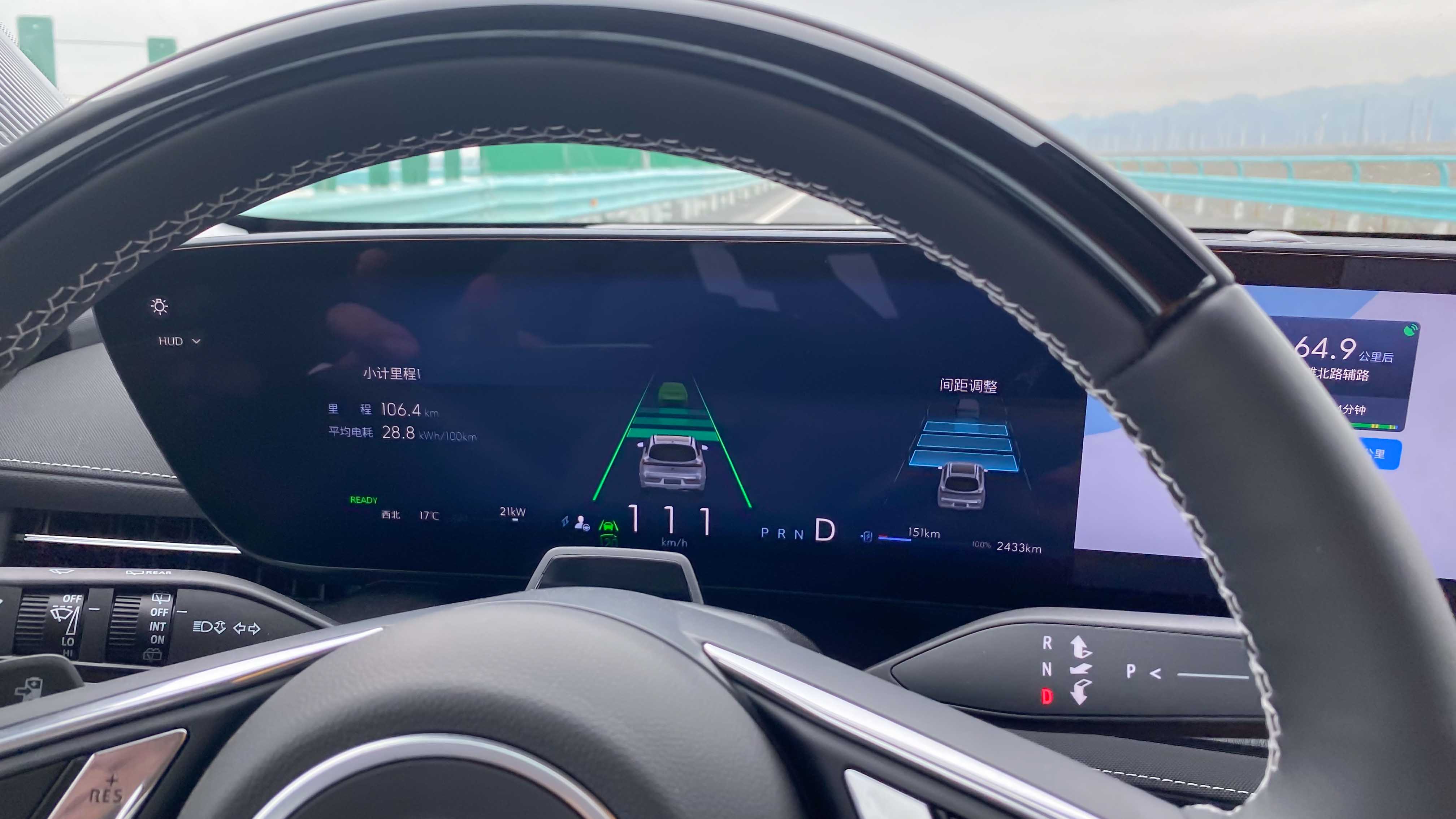
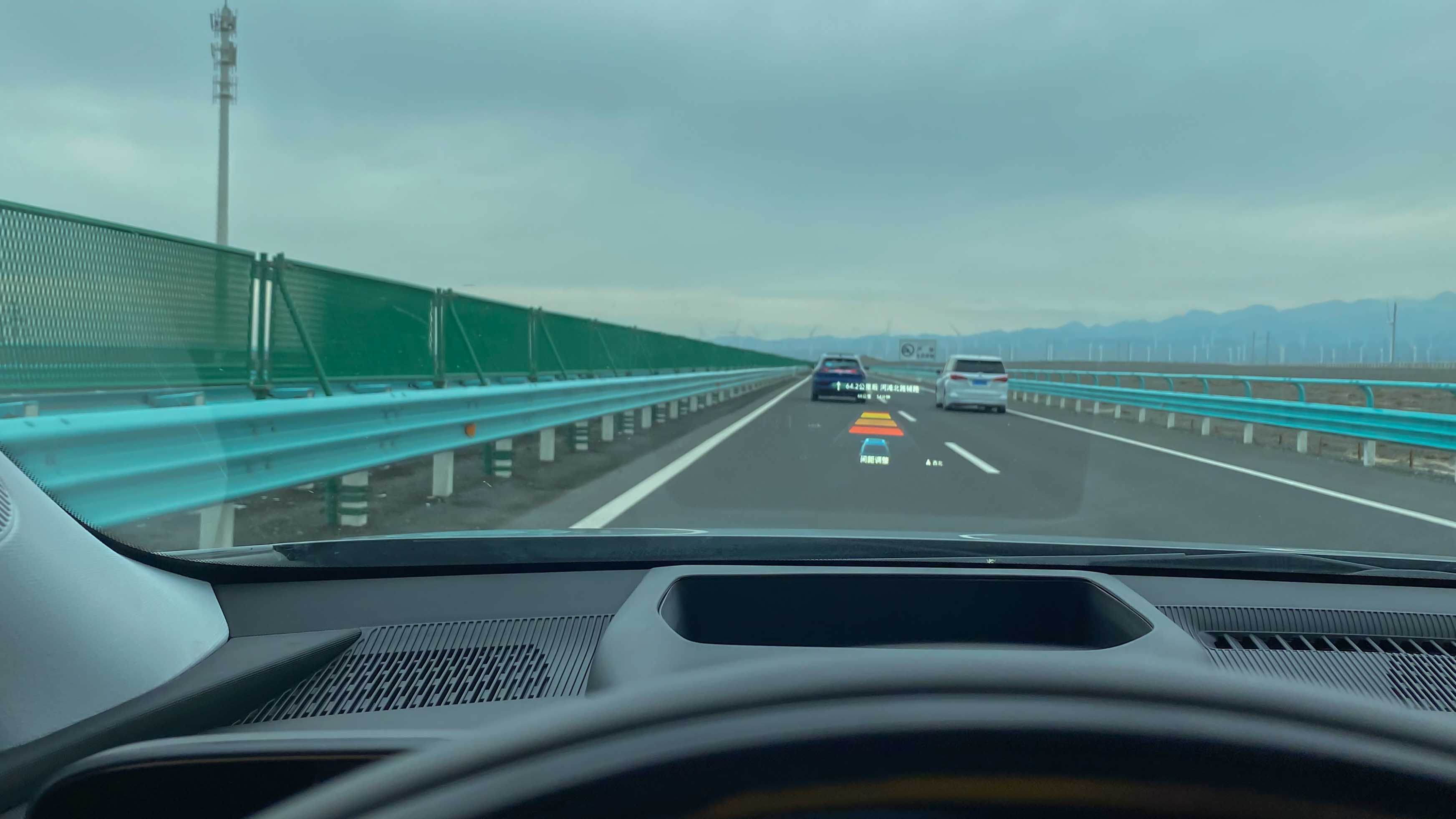
In my experience, even without the Super Cruise feature, turning on the lane-keeping function results in exceptionally smooth longitudinal speed control. Regardless of whether it’s normal or congested traffic, or even a sudden deceleration by the car in front, my vehicle always reduces speed gently at the right moment, only the acceleration is slightly slower compared to a human driver.
Stationary section: A qualified family car
Upon reaching the Red River Valley scenic area, I finally got the chance to take a good look at the car — the Buick ELECTRA E5. Measuring 4892 x 1905 x 1684 mm, with a wheelbase of 2954 mm, the E5 doesn’t appear large among mid to large-sized SUVs. So, how’s the space inside?
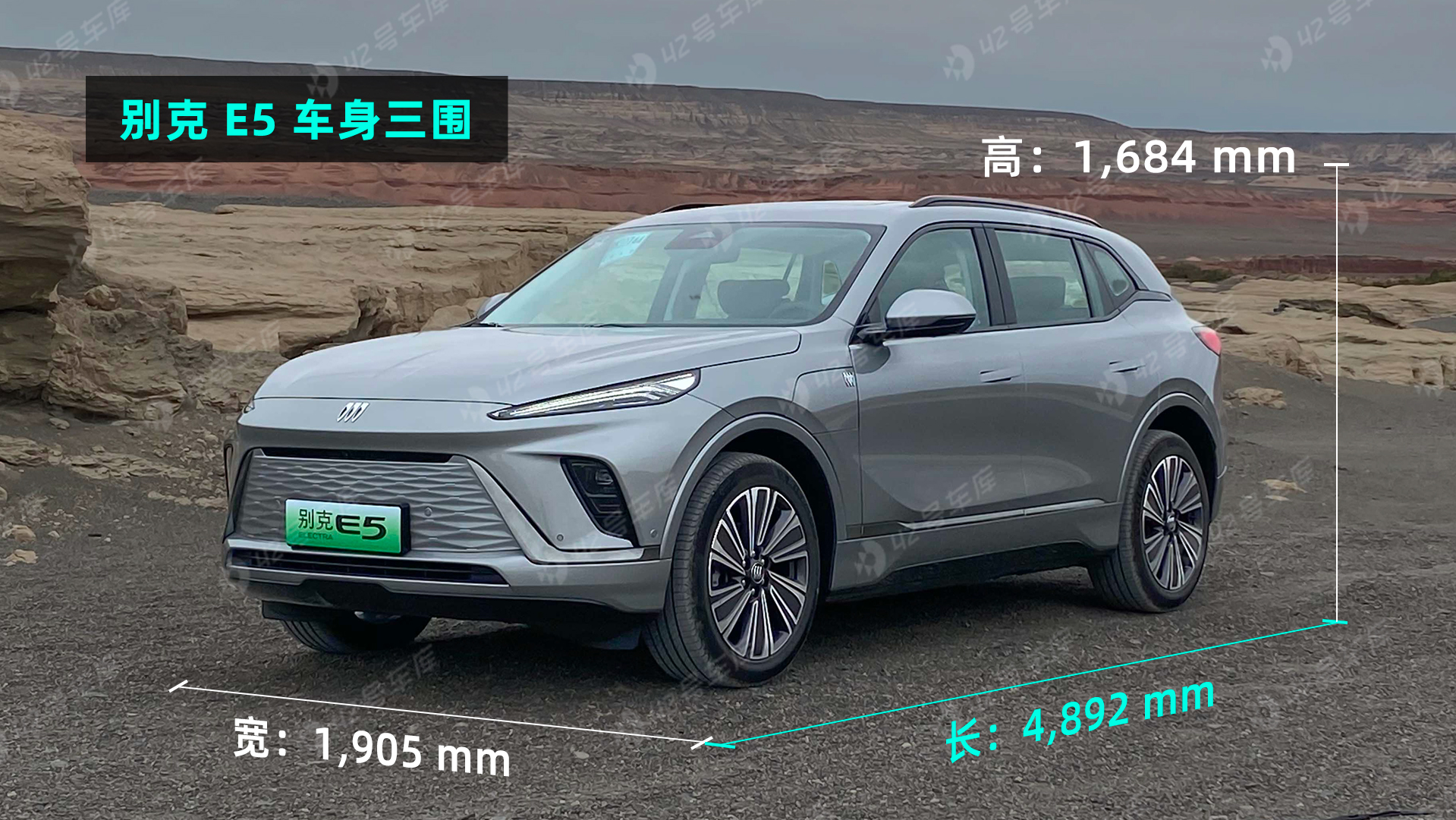
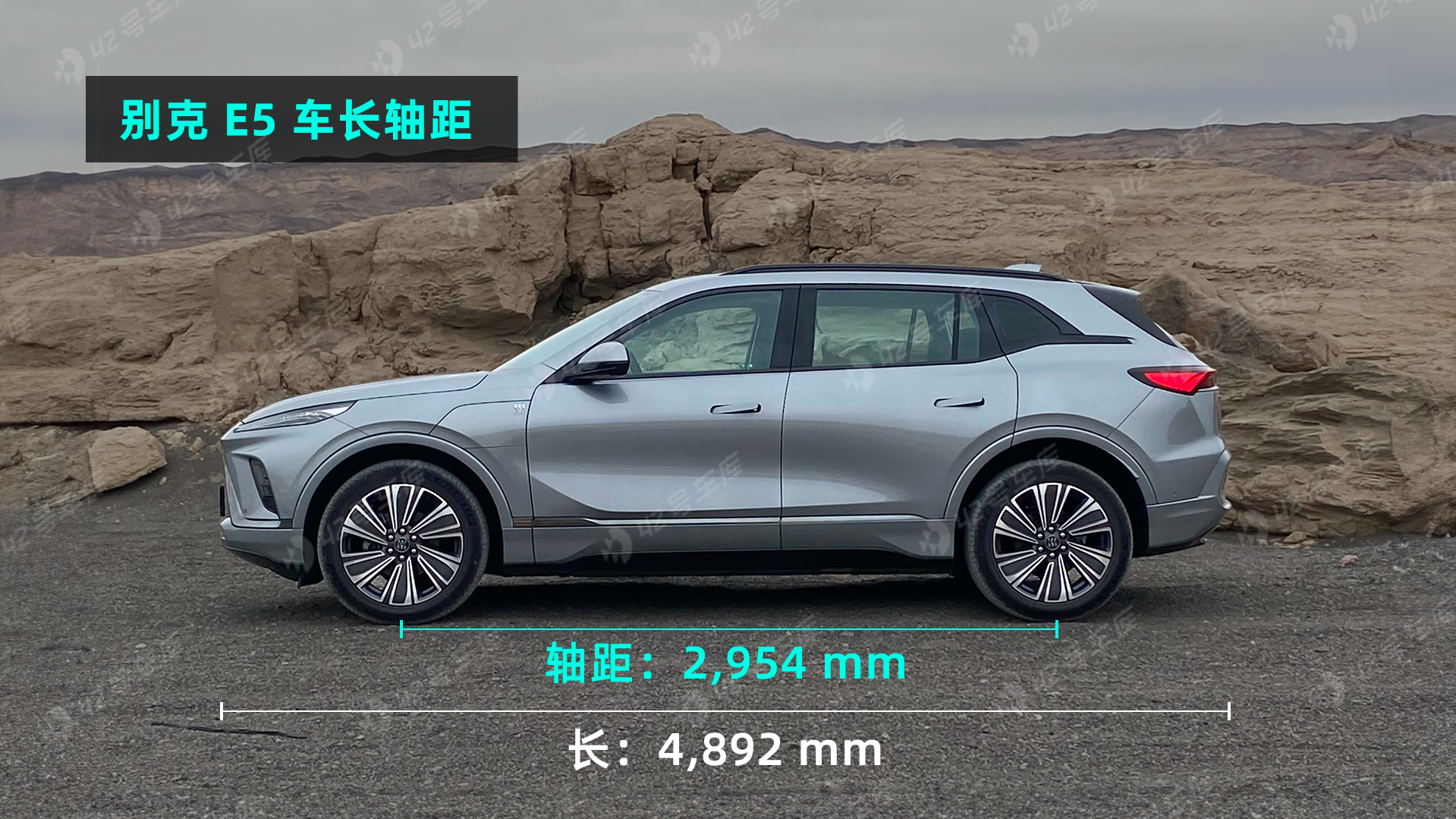
At 176 cm tall and weighing 100 kg, I adjusted the front seats to my everyday driving position. I still had ample legroom – equivalent to a full palm or two fists. If I opened the sunshade, there were two fists worth of headroom to the glass sunroof, with just over a fist even if the sunshade was closed. These spatial features fully justify its advertised label as a ‘large five-seat family SUV’.



The exterior details have been covered in depth, so I will only speak of minor aspects here. Given that it’s a FF (Front-engine, Front-wheel-drive) model, naturally, there is no trunk at the front.
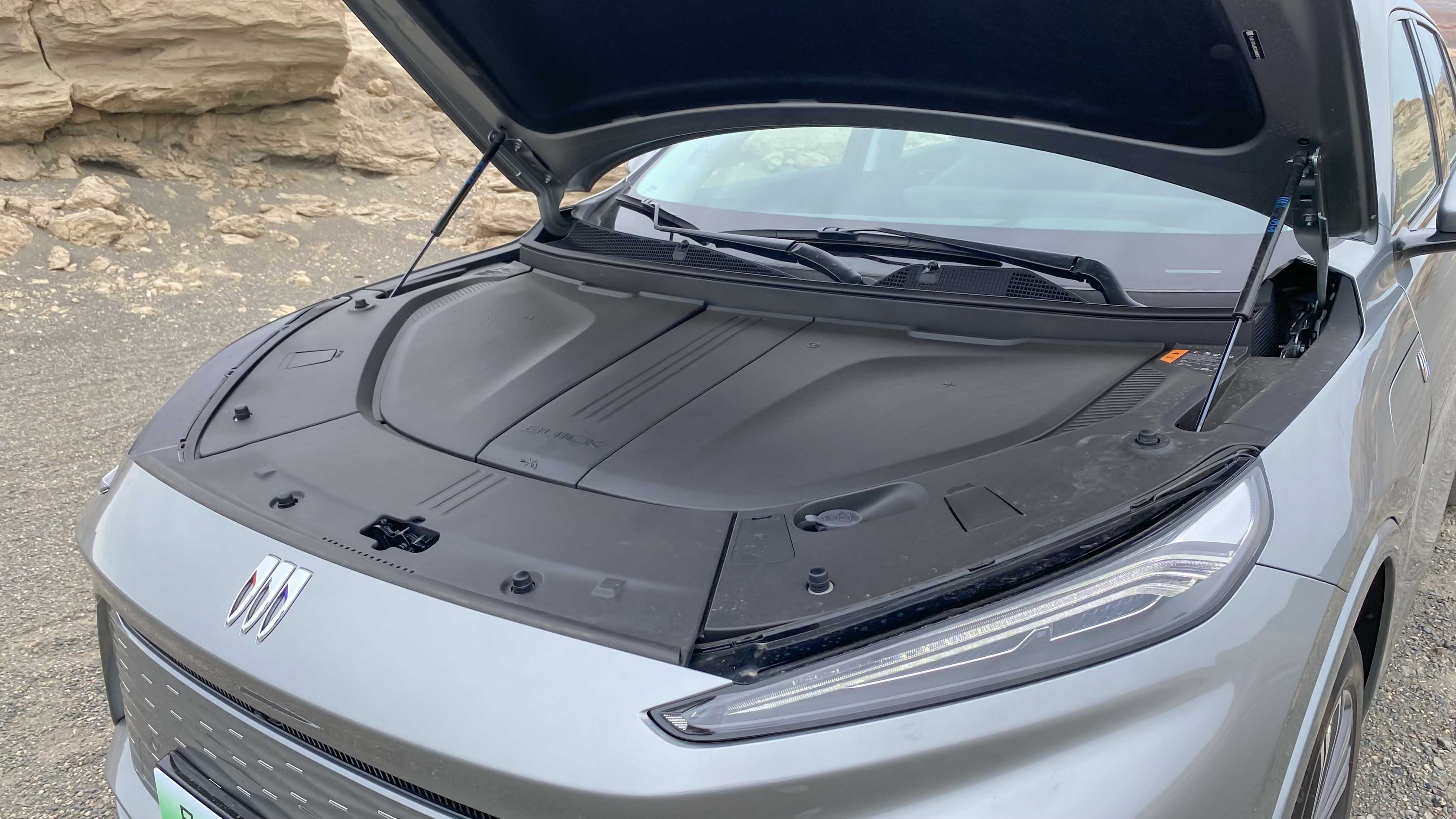
This vehicle uses a six-spoke wheel hub with Michelin e·PRIMACY tires, which are comfort silent tires designed specifically for electric vehicles. It plays a role in promoting the driving range, and is spec’d at 245/50 R20.
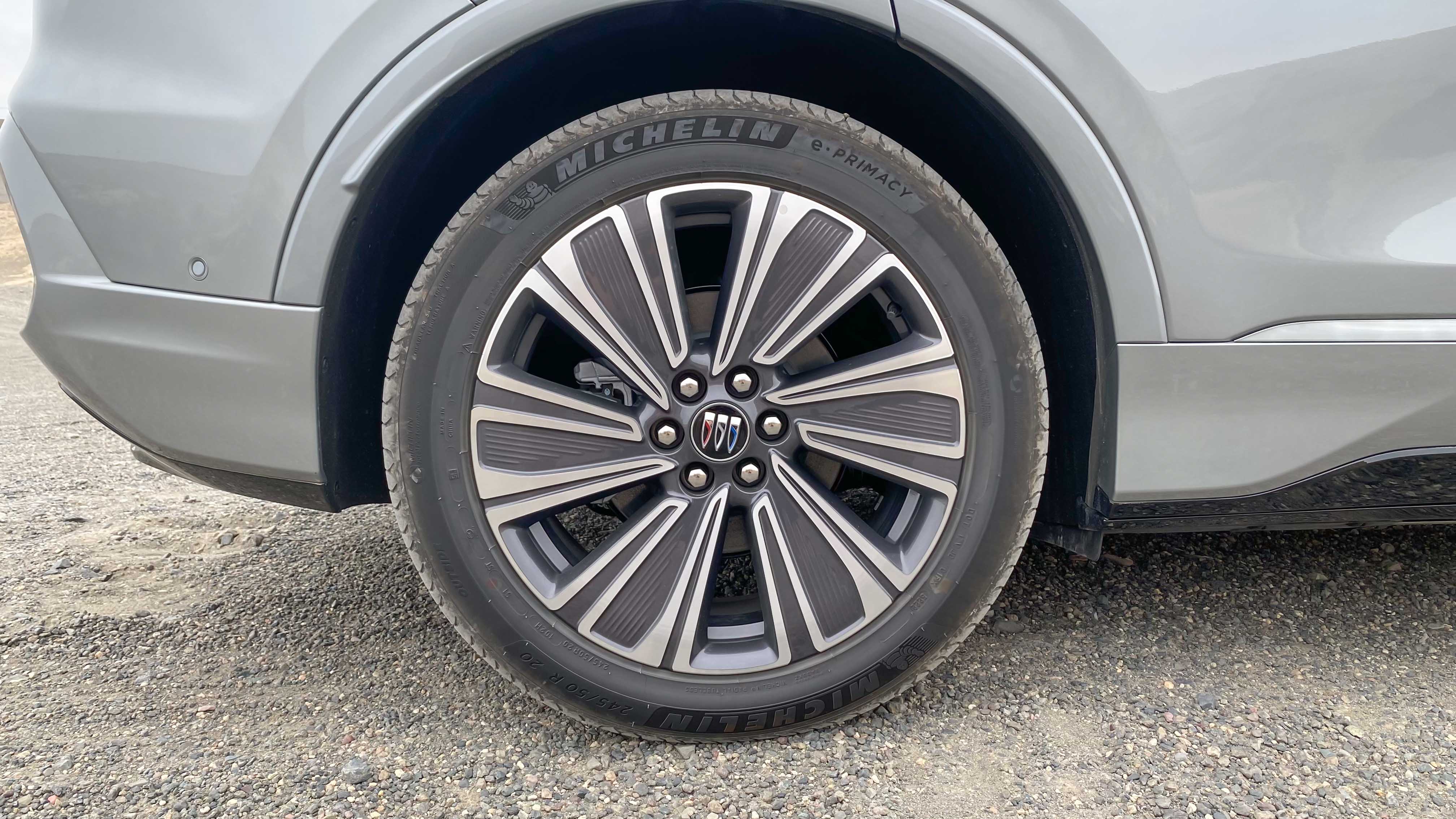
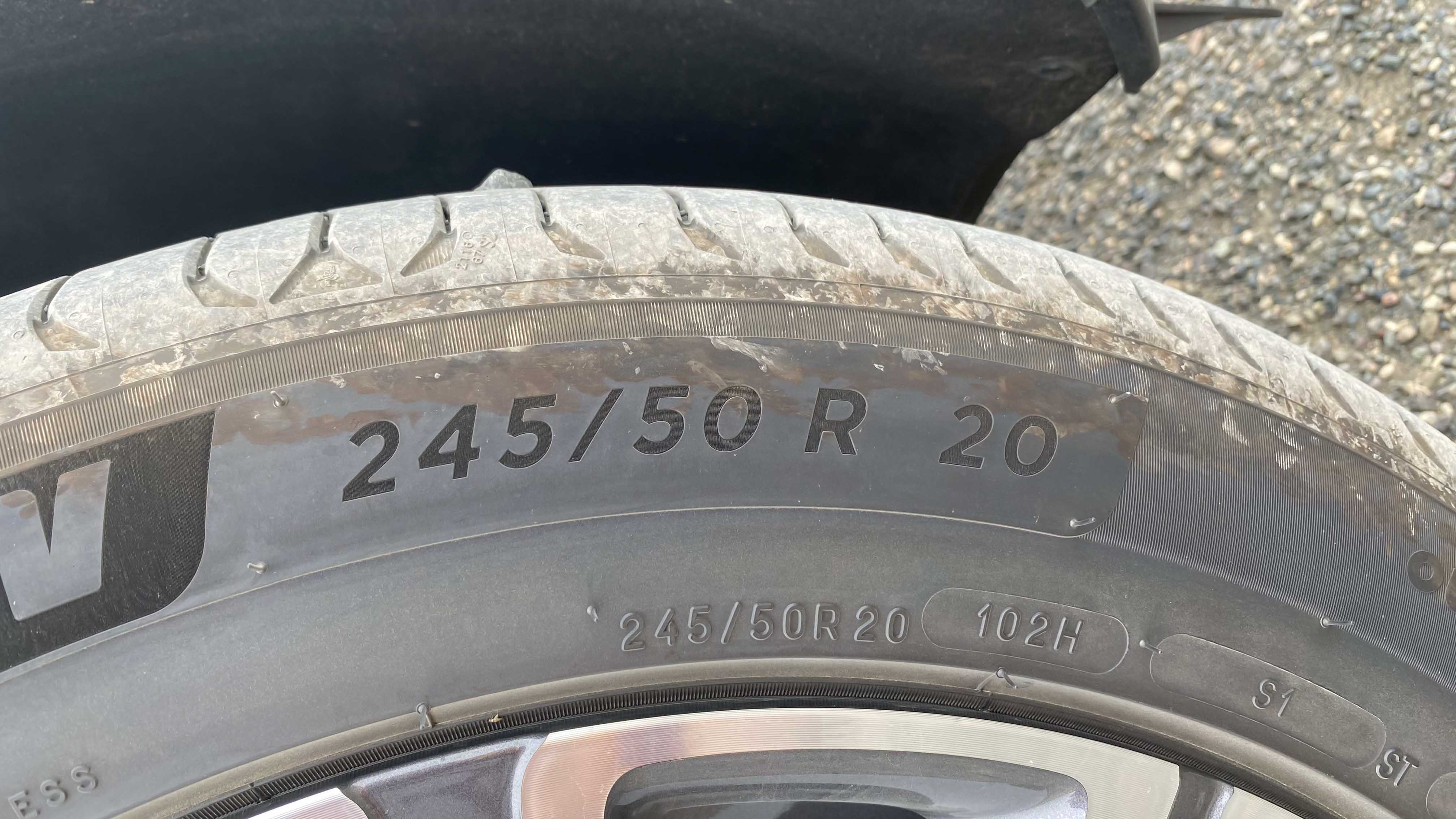
Like many American brand electric vehicles, the charging port is positioned at the front left of the vehicle. Pressing the Buick logo will open it. During charging, the internal 10 power indicators will light up in sequence according to the current power level, which allows you to easily see the current charge of the vehicle.
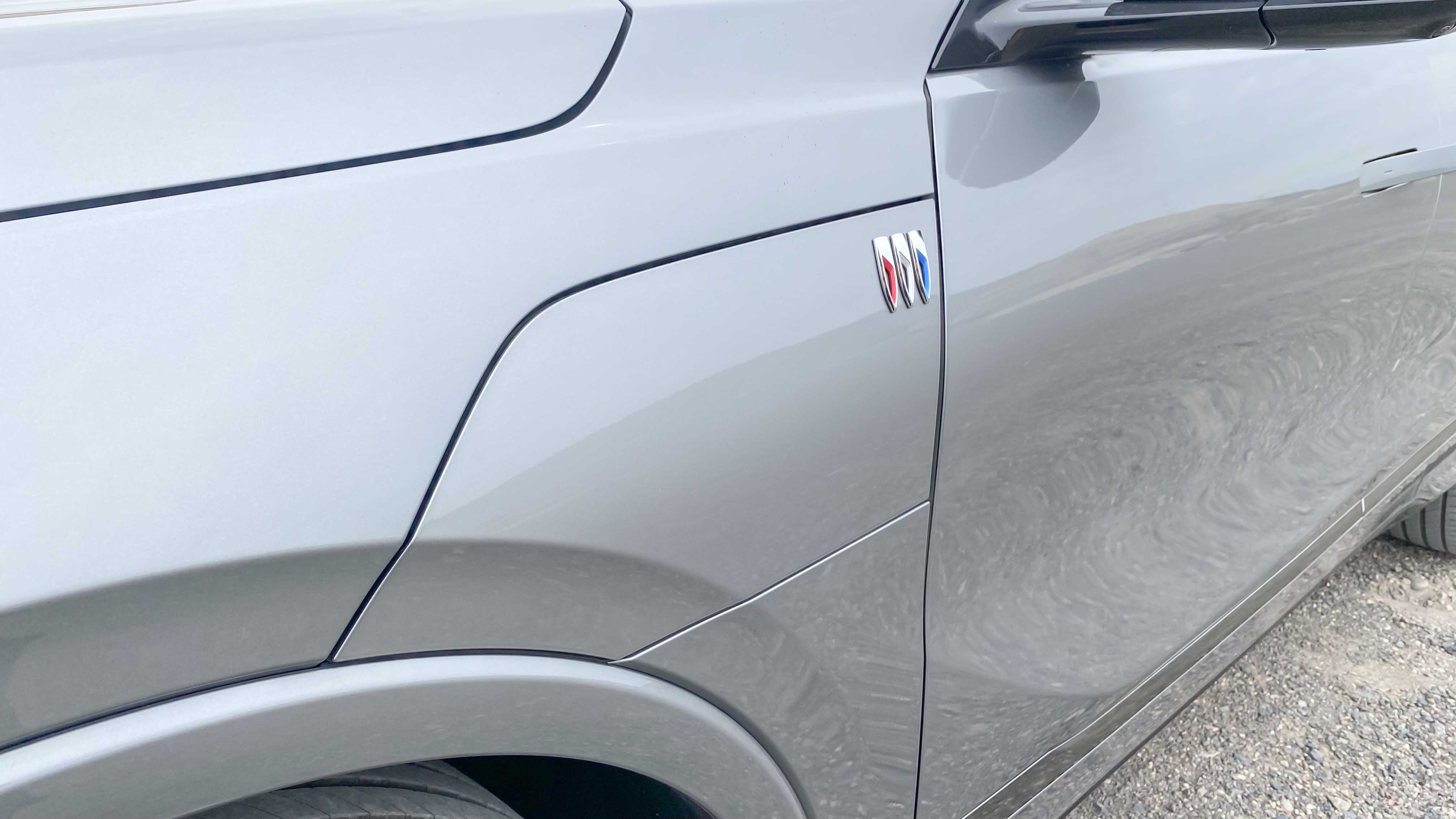
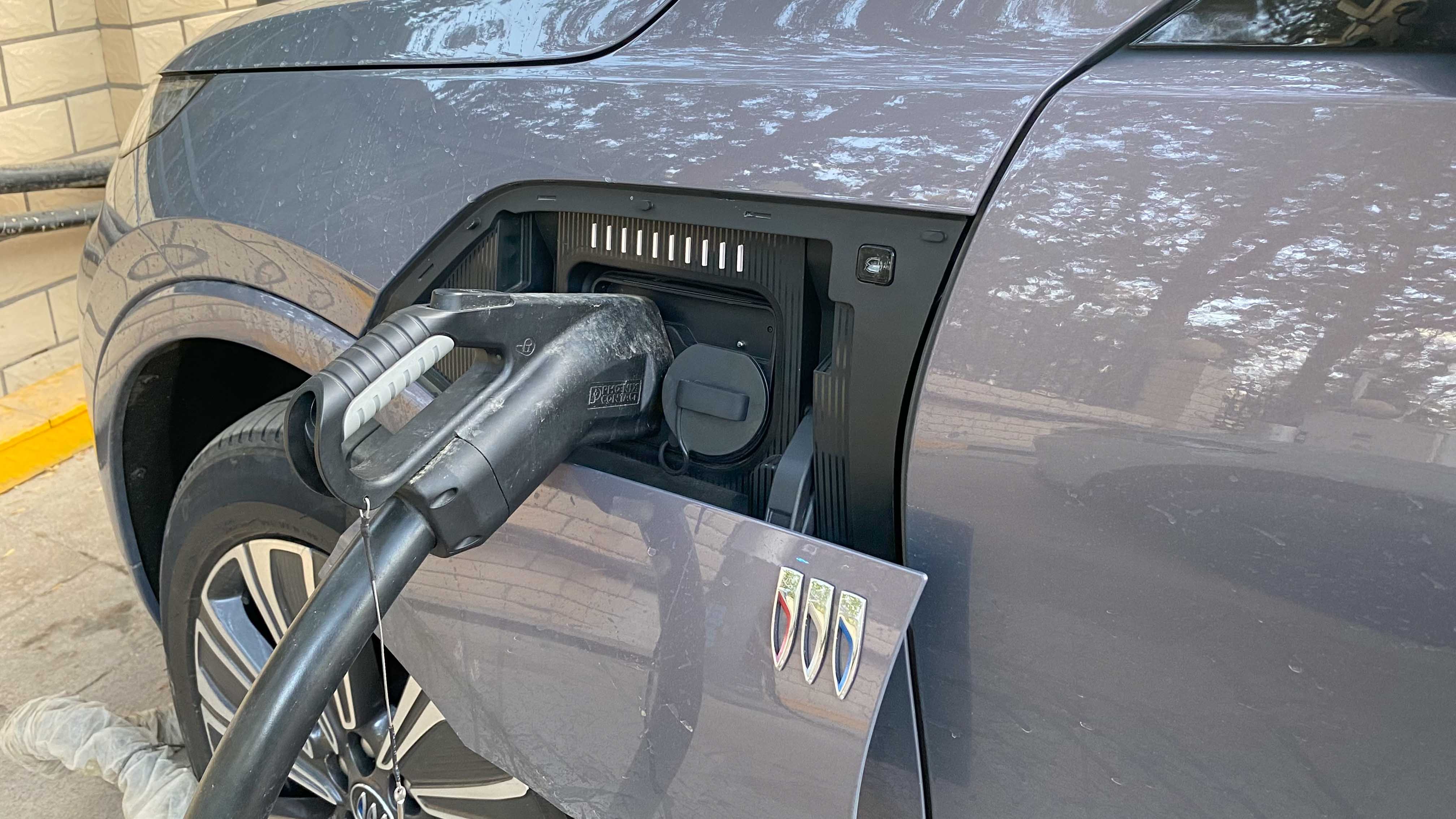
The card key’s sensing area is located at the B pillar area of the driver’s door. If you open the door to swipe the card, remember to swipe in the opened area.
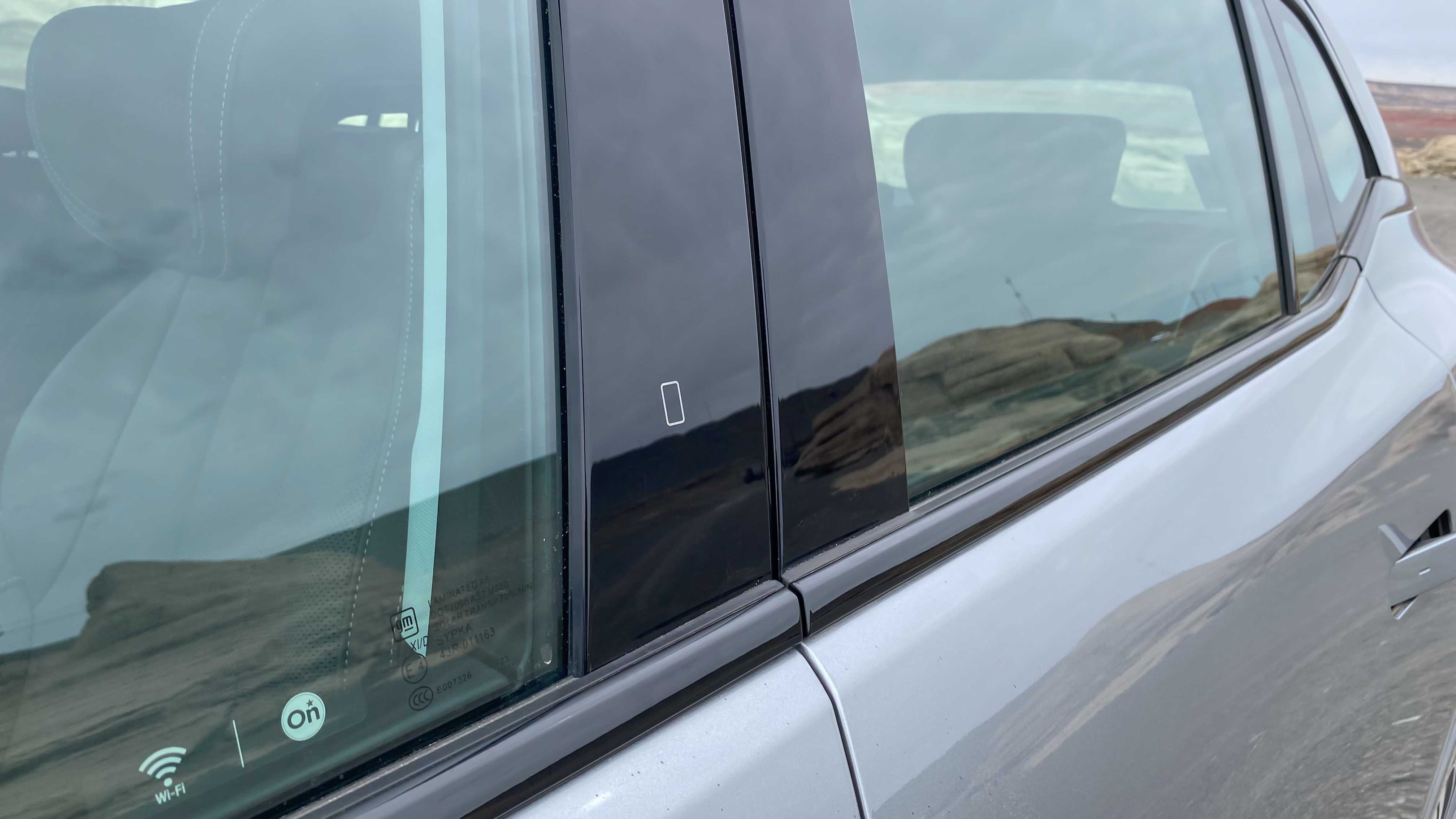
The front row windows utilize double-glazed laminated glass which offers good NVH performance on various roads in Xinjiang.

The rear row windows are not double-glazed, but they are quite thick. The window can be fully lowered, which isn’t common amongst electric vehicles.

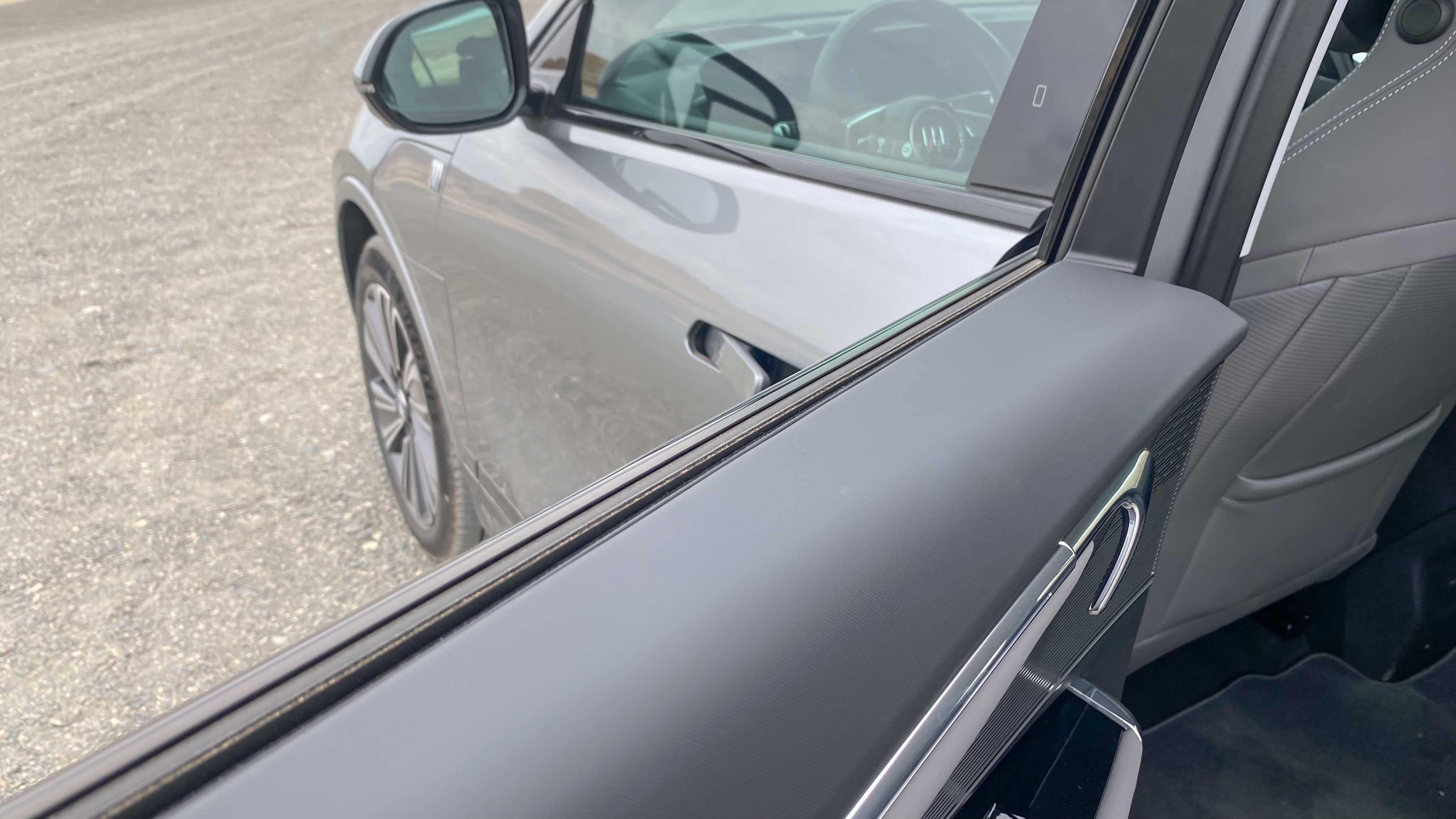
The trunk space has a volume of 502 L. What does that mean? I stuffed the trunk with a 20-inch suitcase, two backpacks, and two bags, and it can be seen that even half of the space was not filled. It can easily accommodate the luggage of a family with 3-4 members for a road trip, not to mention the rear row also supports 4/6 folding.
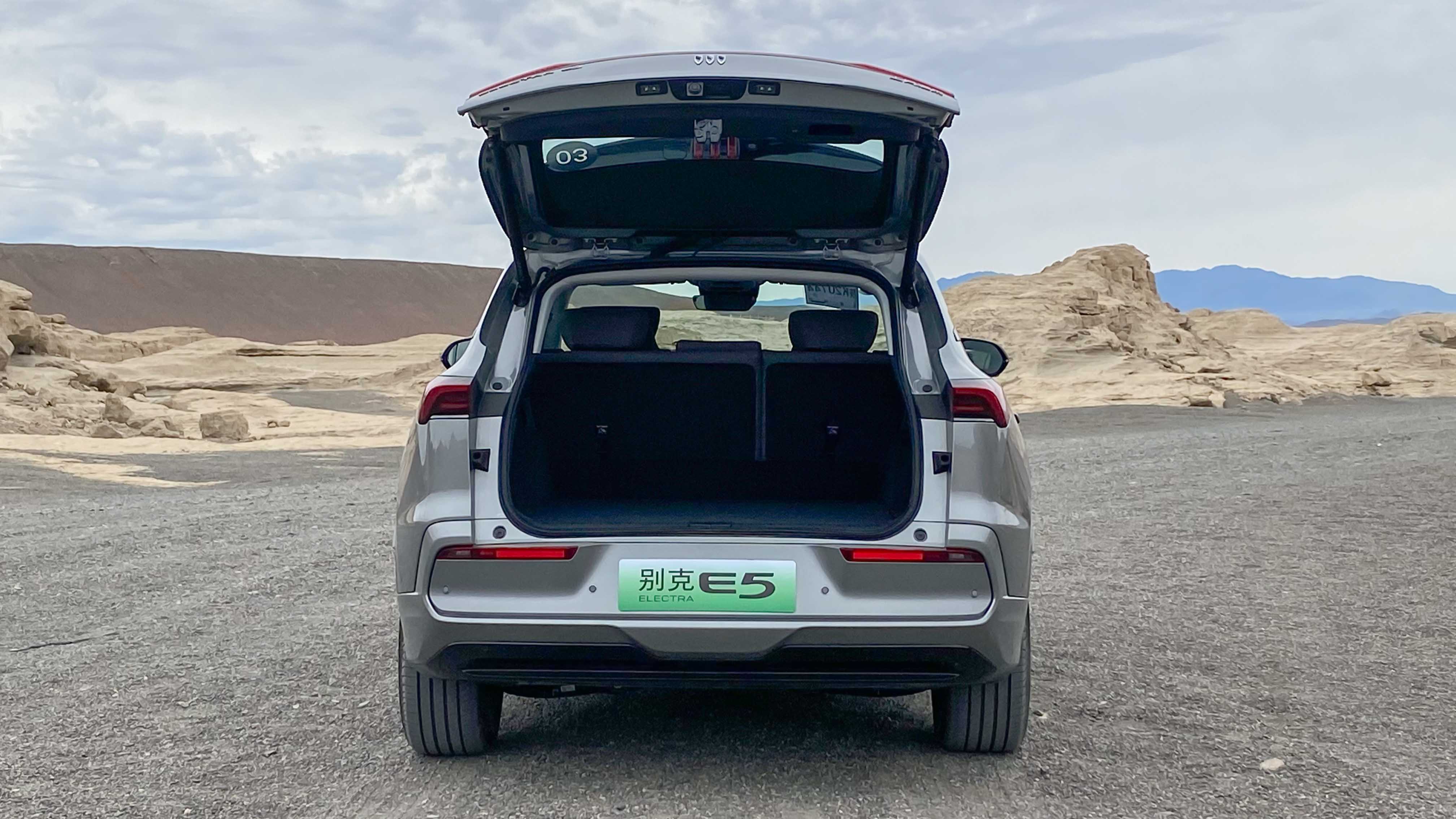

Lift the rear cover board, and in addition to emergency tools, there are also storage compartments with divided areas for loose items. If you don’t want the storage compartments, they can be removed to gain more lower level space.
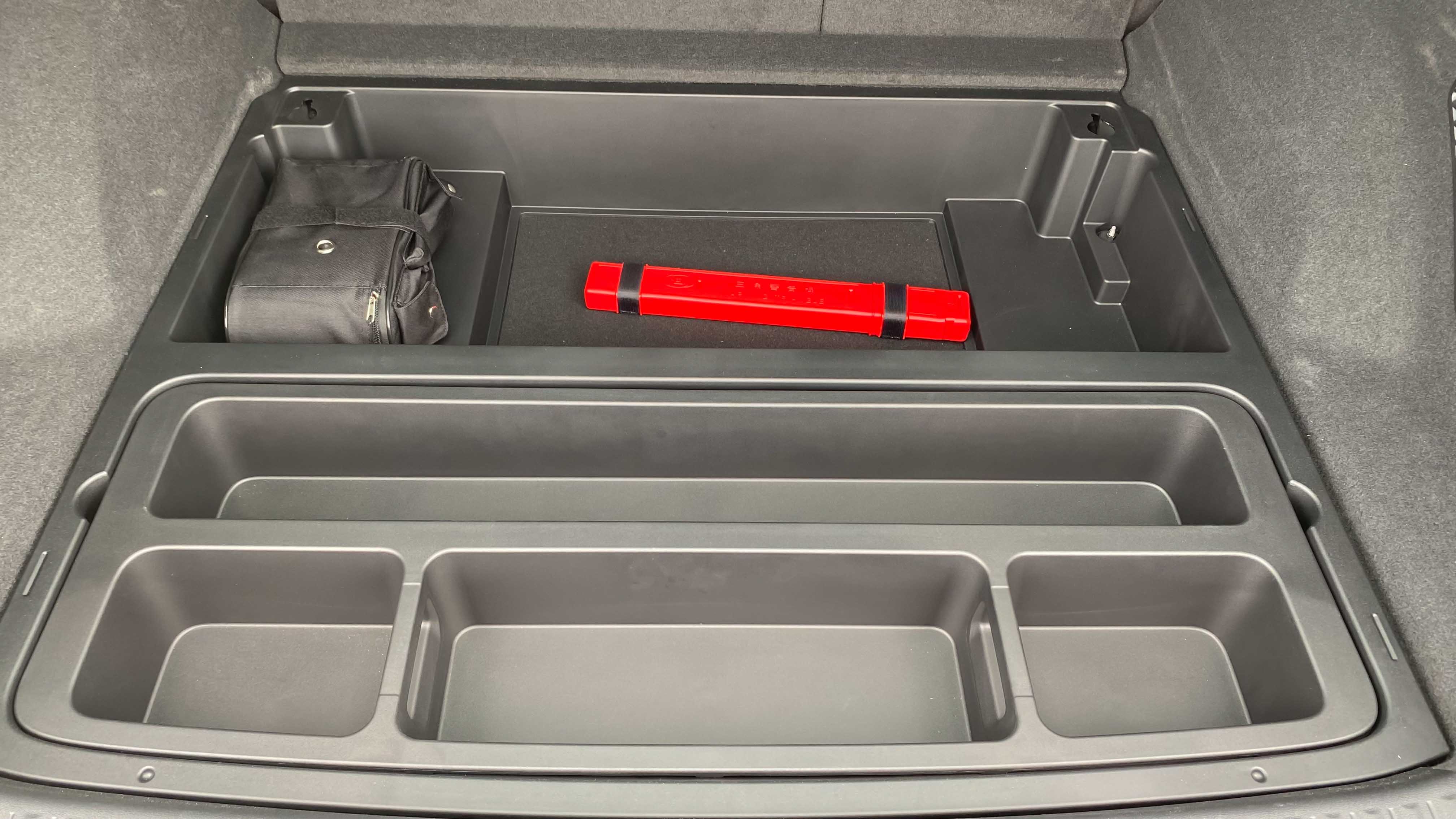 Let’s delve deep into the interior layout. First off, the seats in the vehicle are undoubtedly expansive, coupled with soft padding. The headrests are designed with broader dimensions, offering more comfort than standard ones.
Let’s delve deep into the interior layout. First off, the seats in the vehicle are undoubtedly expansive, coupled with soft padding. The headrests are designed with broader dimensions, offering more comfort than standard ones.
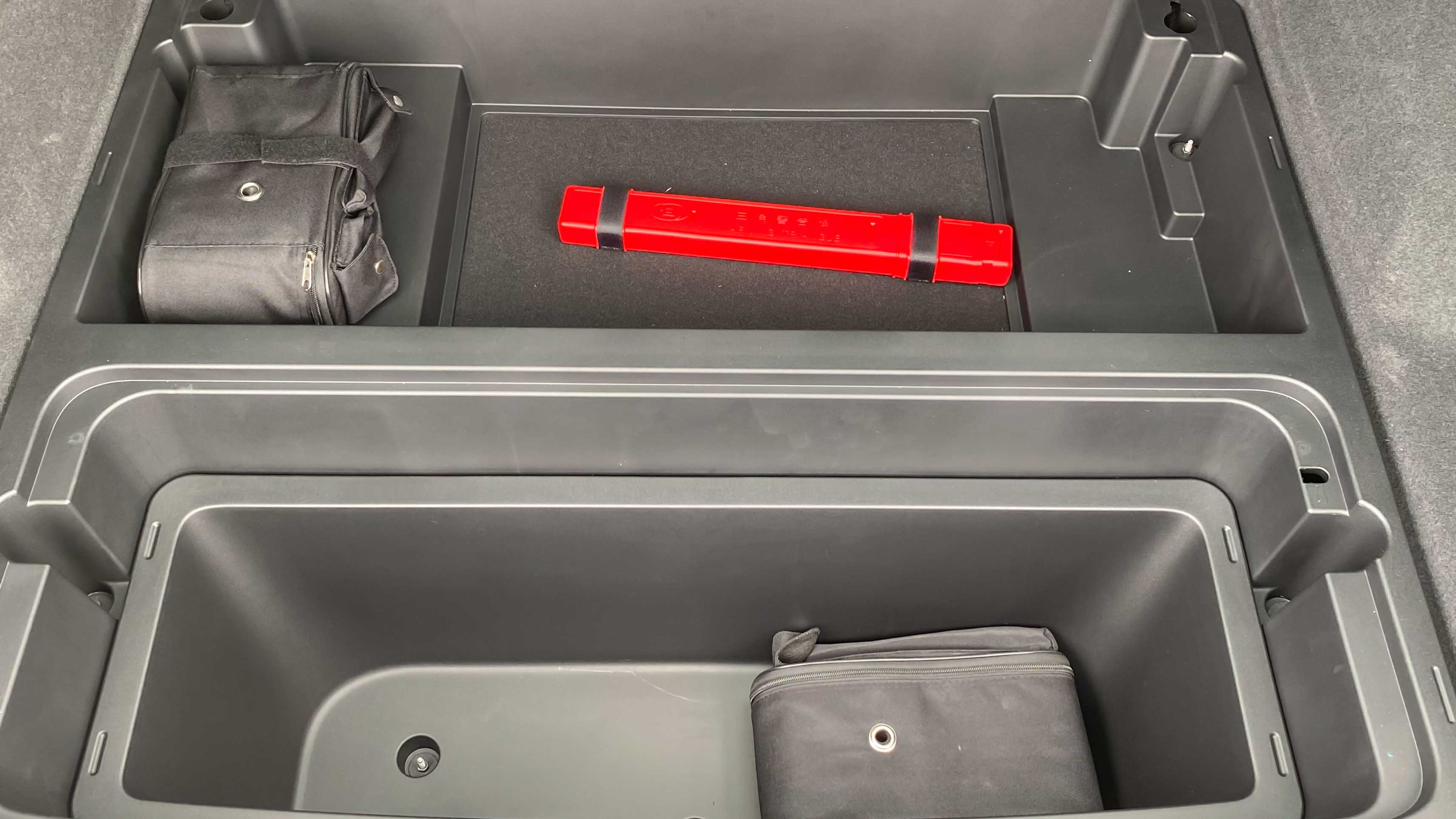
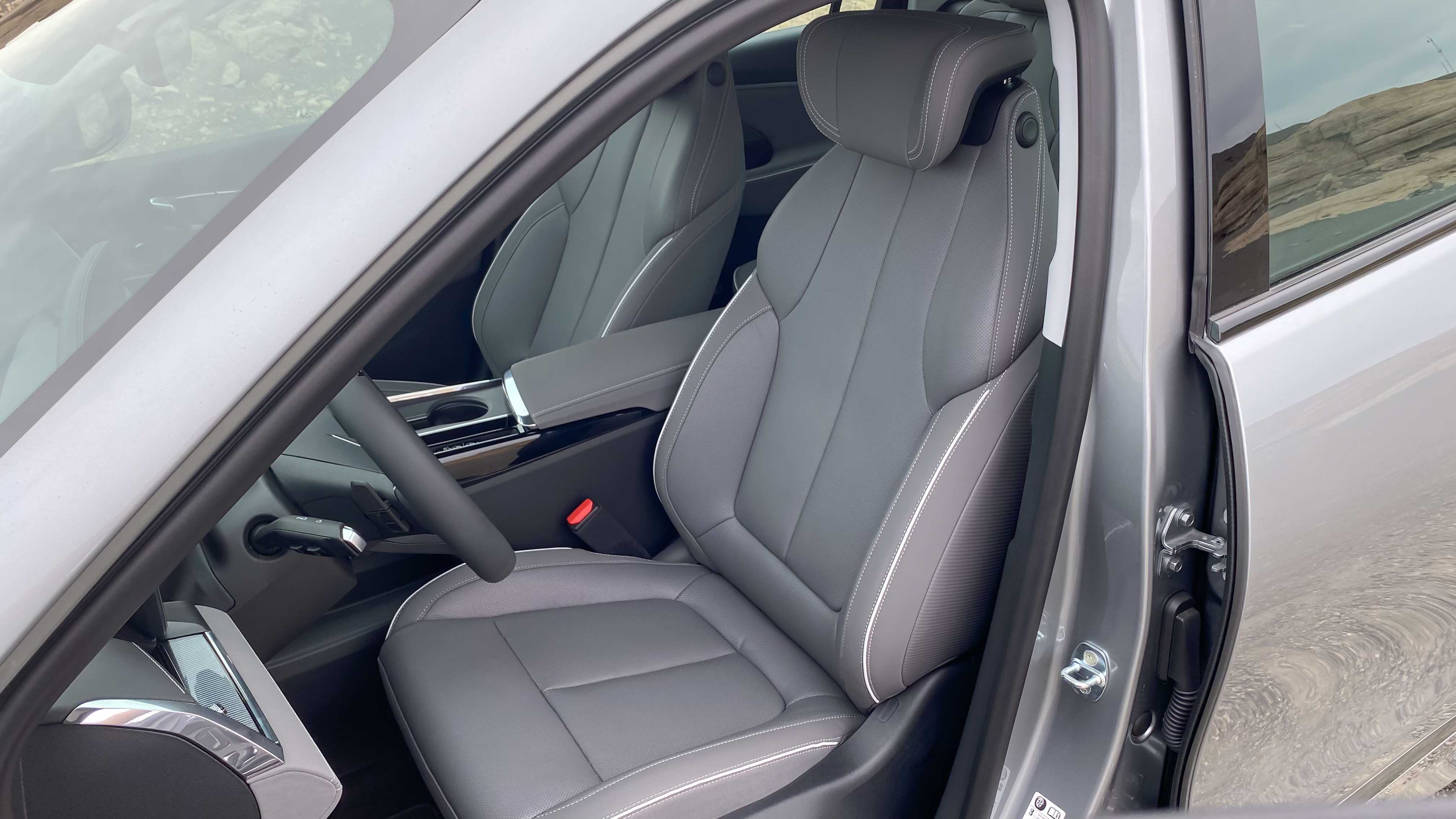
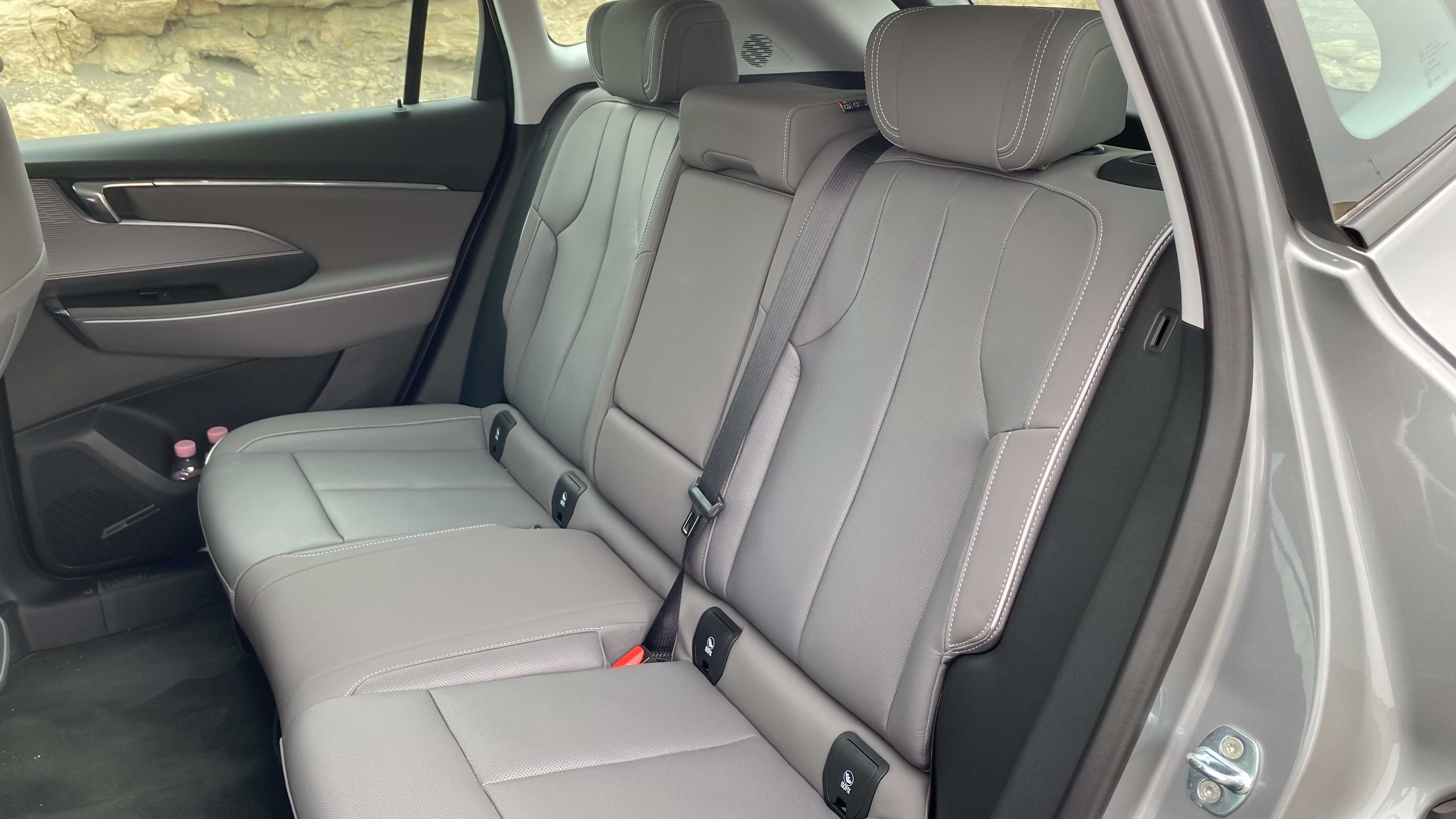
Inside, what grabs your attention promptly is the 30-inch 6K resolution instrument control curved screen, creating an embracing feel for the main driver. Various car information is lucidly displayed on it.
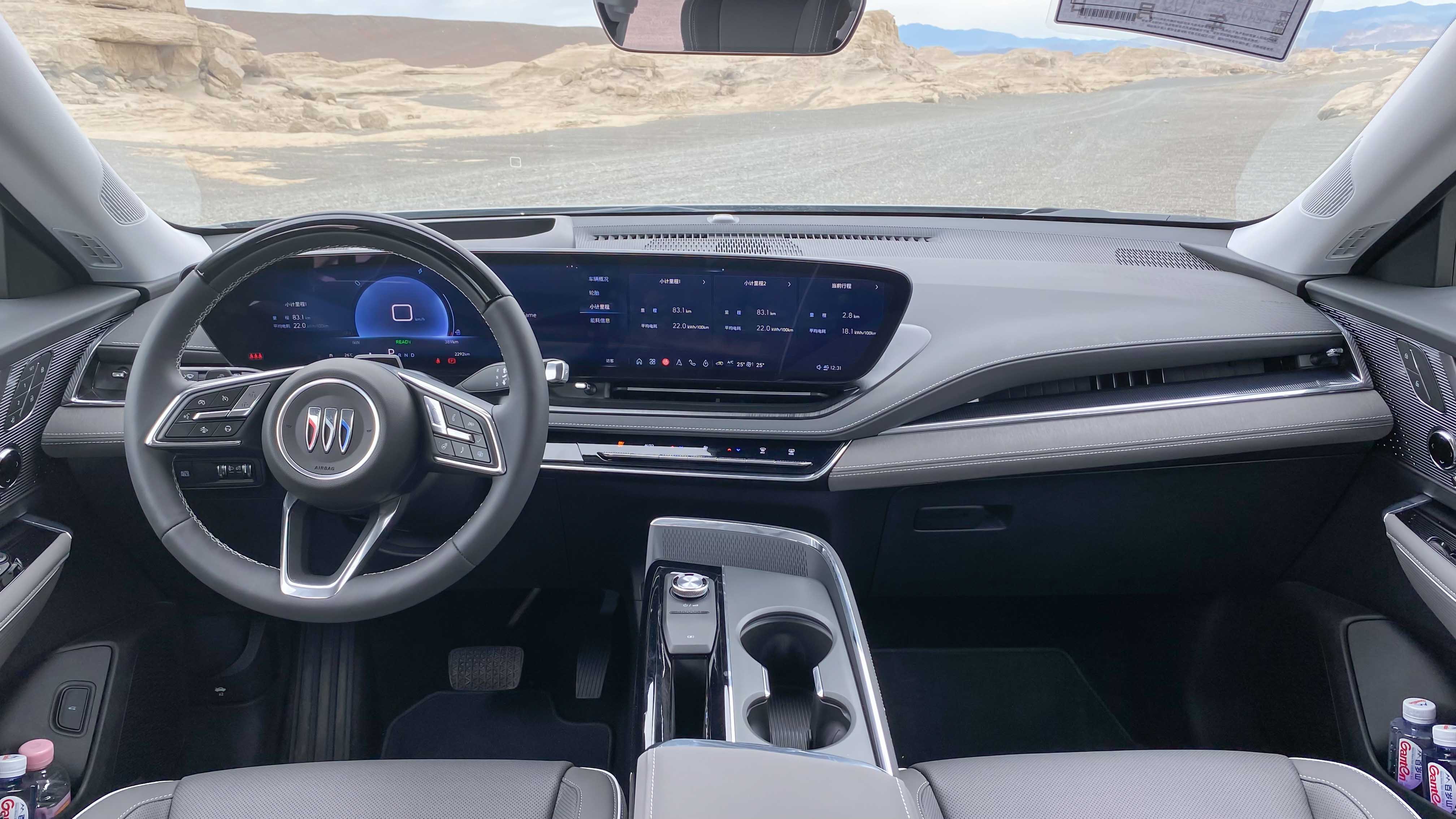
Apart from the front buttons on the steering wheel, there are two more buttons on both the left and right at the back. The two buttons on the left side are for music control, previous and next, while those on the right are for volume adjustment.
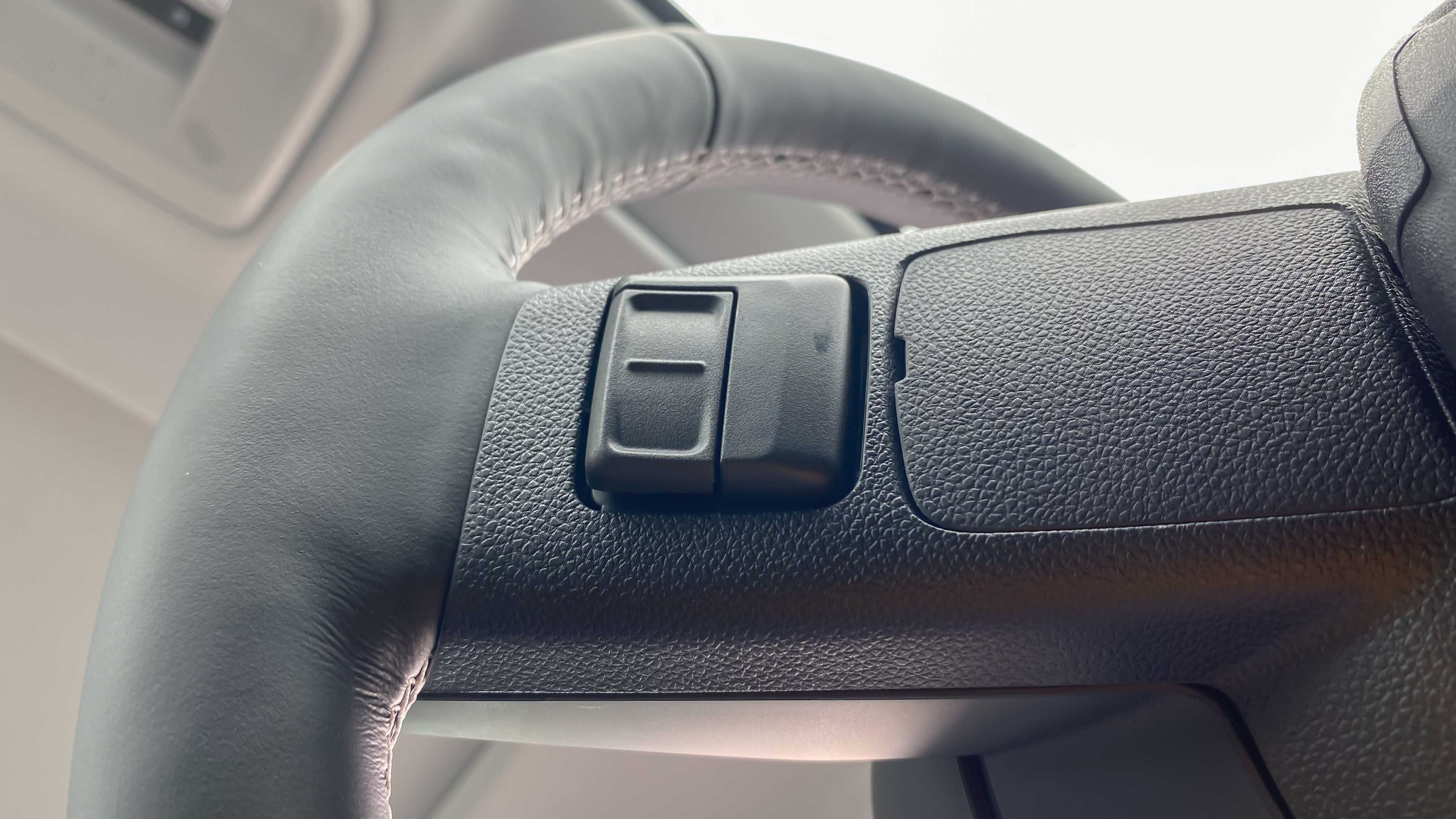
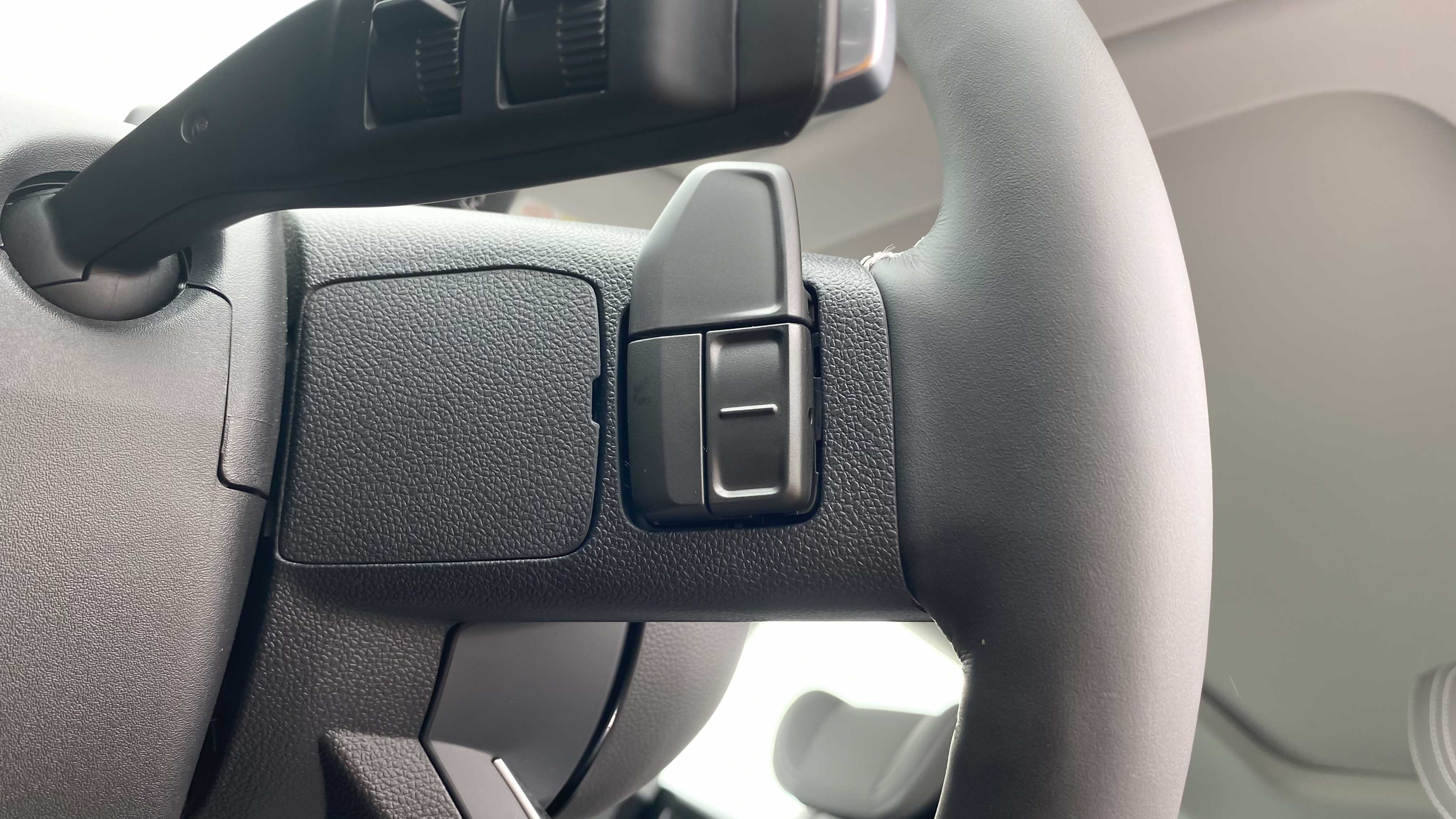
The vehicle’s HUD offers multiple display modes. Besides showing regular information like speed and navigation, it can also display detailed maps, auxiliary driving status, and more.
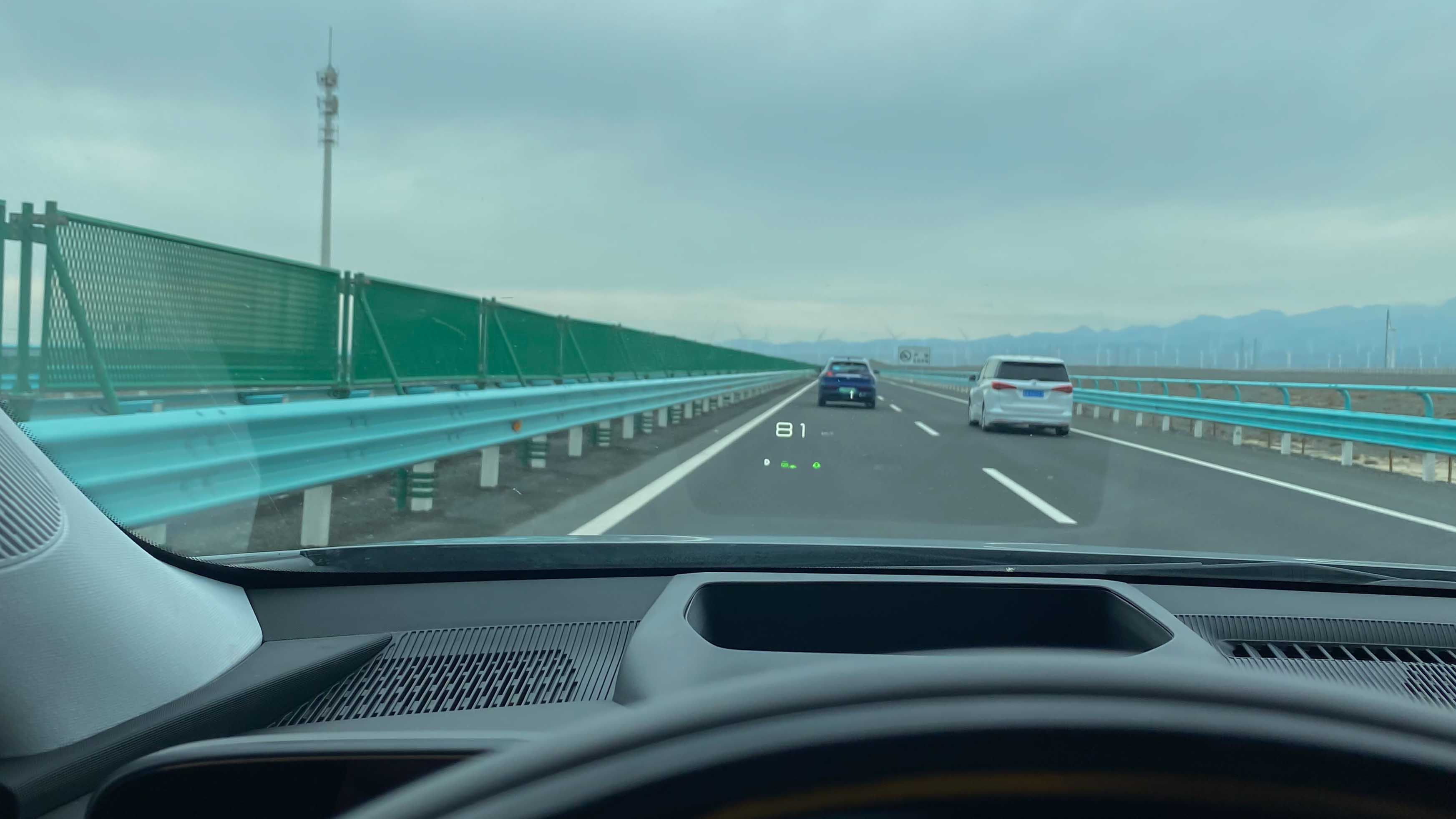
The physical buttons on the driver’s side car door include controls for windows, rearview mirrors, locks, along with seat adjustment and memory settings. Next to the storage space on the door panel, there’s also a physical button for the trunk latch.
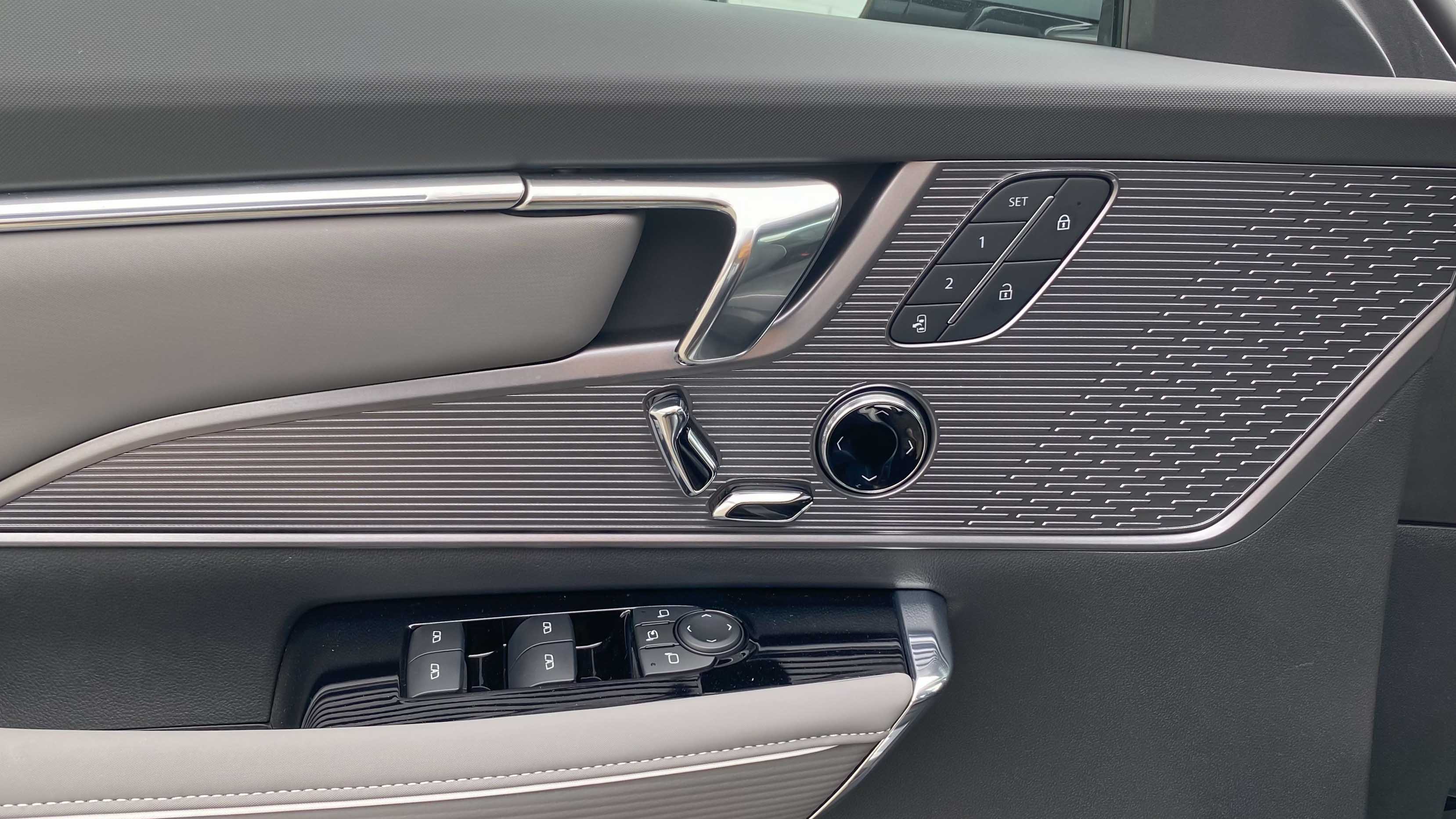
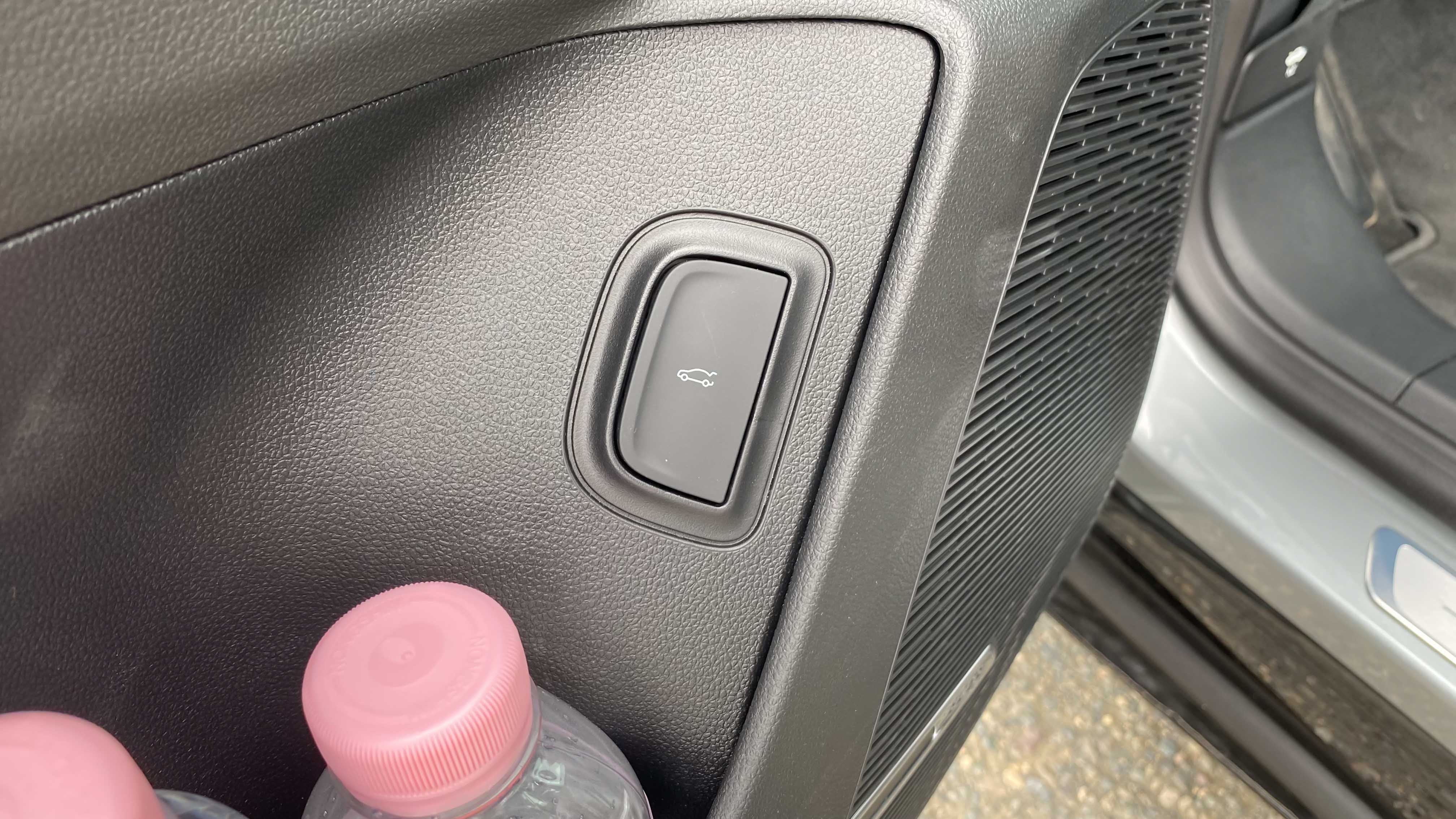
The storage space on the front door panel is decent, capable of accommodating up to five small bottles of mineral water.
 The car is equipped with a 14-speaker BOSE audio system, and the sensitivity is quite good for a 200,000 price range.
The car is equipped with a 14-speaker BOSE audio system, and the sensitivity is quite good for a 200,000 price range.
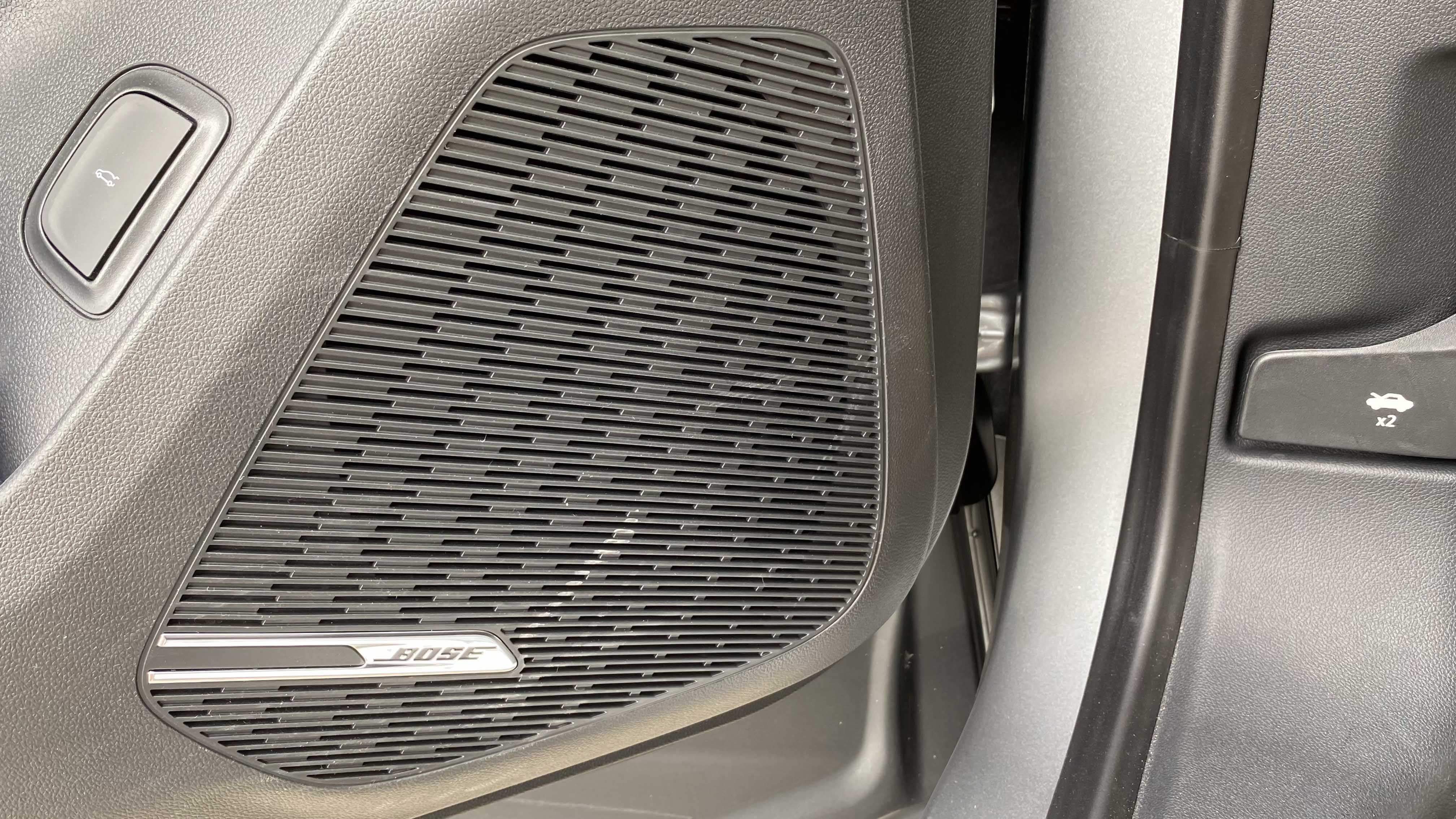
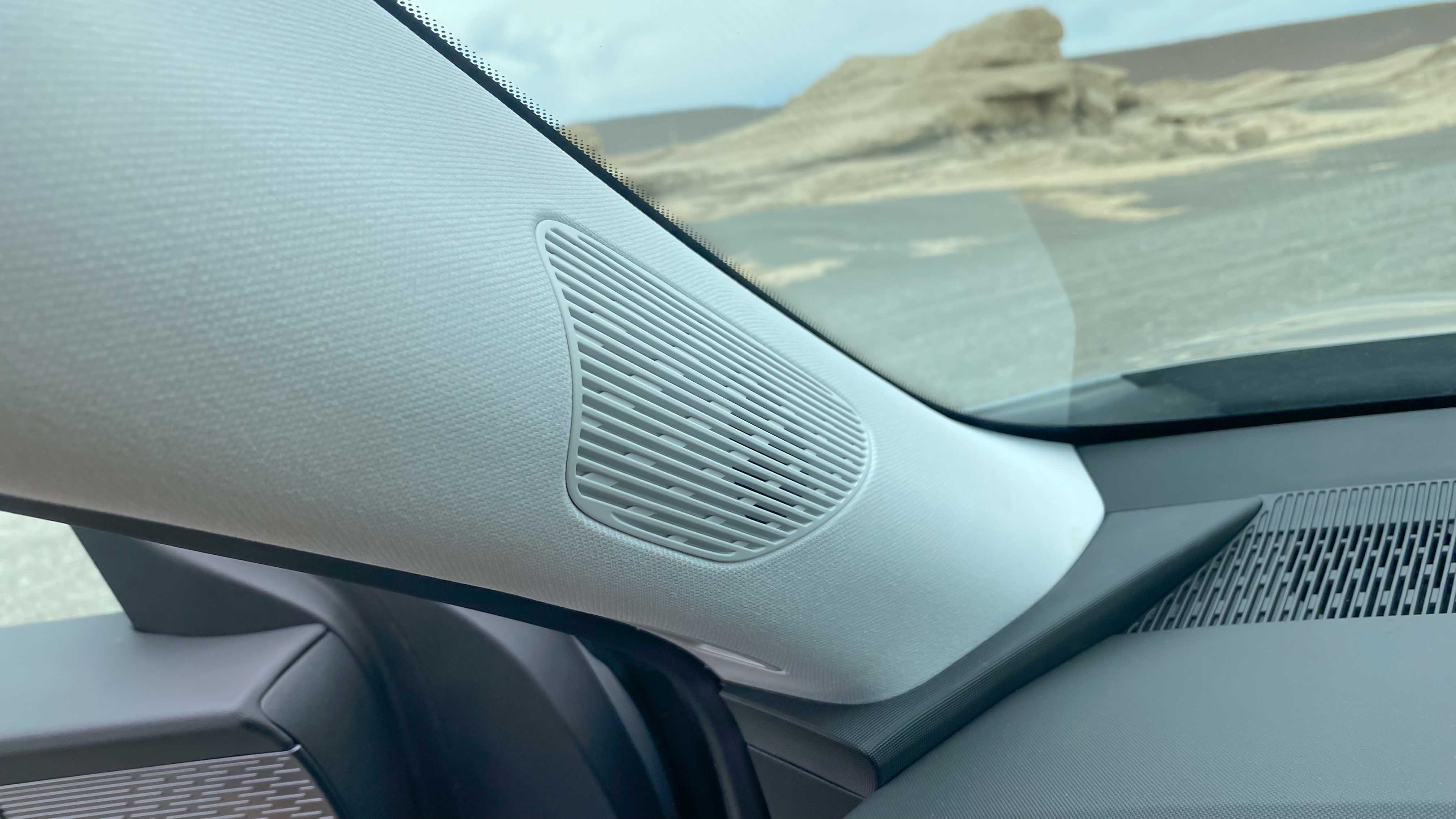
The most useful keys in the row of hard buttons at the driver’s left knee position are the lane assist switch buttons. Because when driving on the roads in Xinjiang, you often encounter illegally parked vehicles, non-motorized vehicles, pedestrians, etc., on the right side of the two-lane sections. At this time, the vehicle often needs to cross the line or even exceed the line to dodge. If the function is on at this time, the vehicle will make corrections when crossing the line, which may impact driving.
After getting on the highway or national highway, you need to turn on the lane keeping function again, so ** you need to turn this function on and off frequently **. If there is no physical button, I can only do it on the car screen or through voice control, which is very inconvenient. Having a physical button is much more convenient.
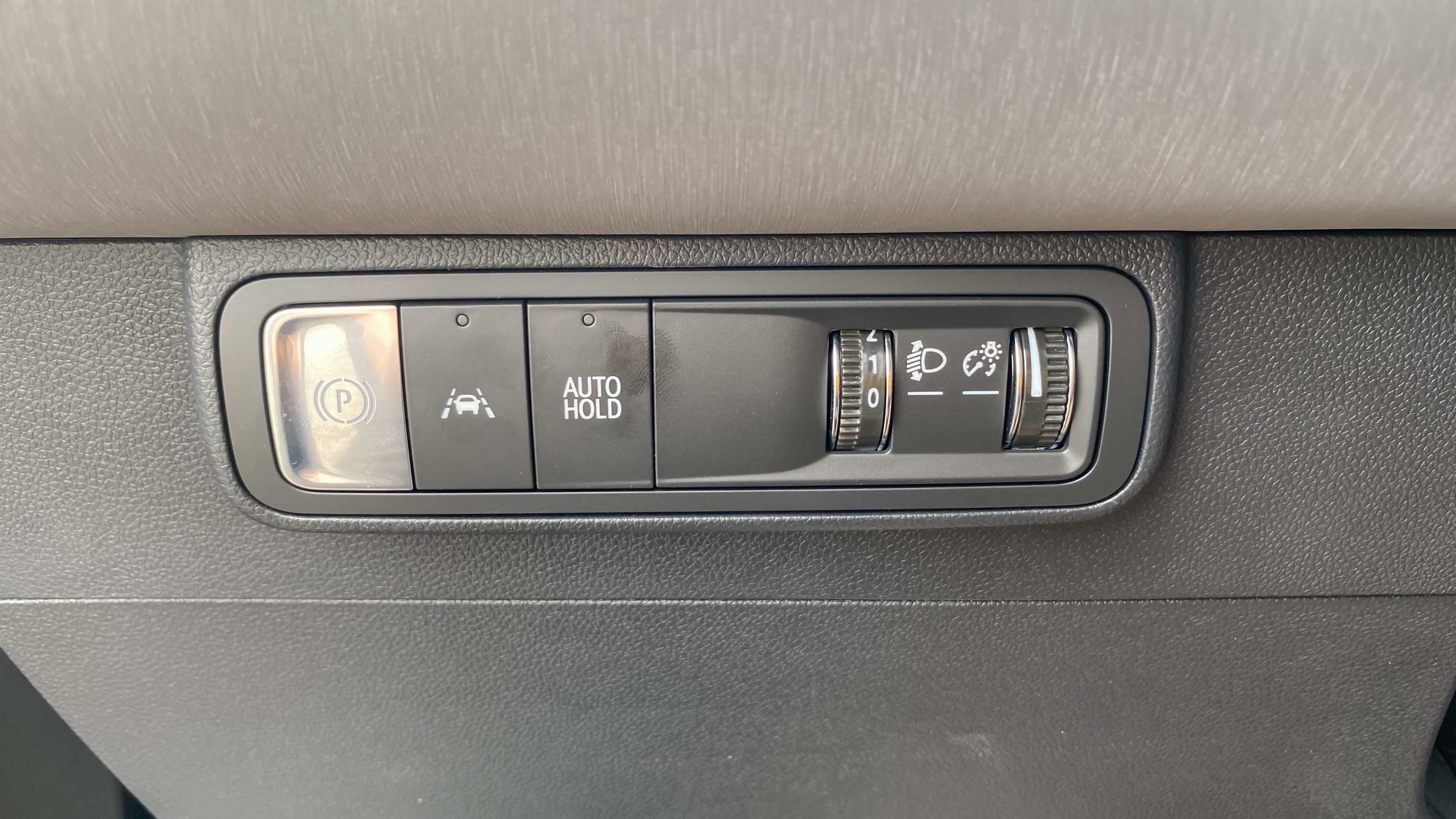
However, the AutoHold function will close by default every time it is unlocked, and needs to be reopened.
The front physical air outlets and air conditioning buttons, did you find out? The physical buttons of this car are basically the same as those of a fuel car. The only thing that may be cancelled is the start and stop engine button.
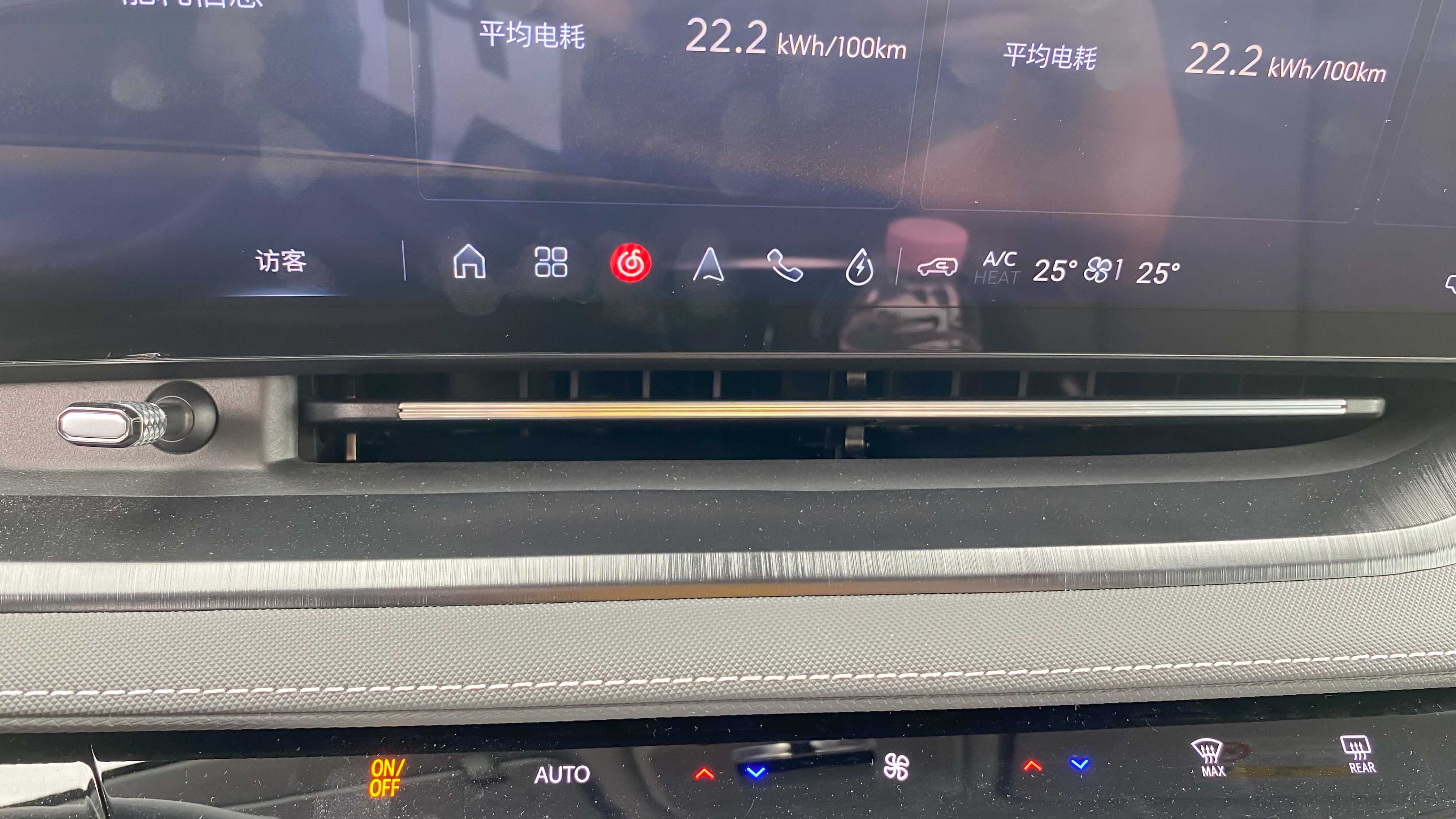
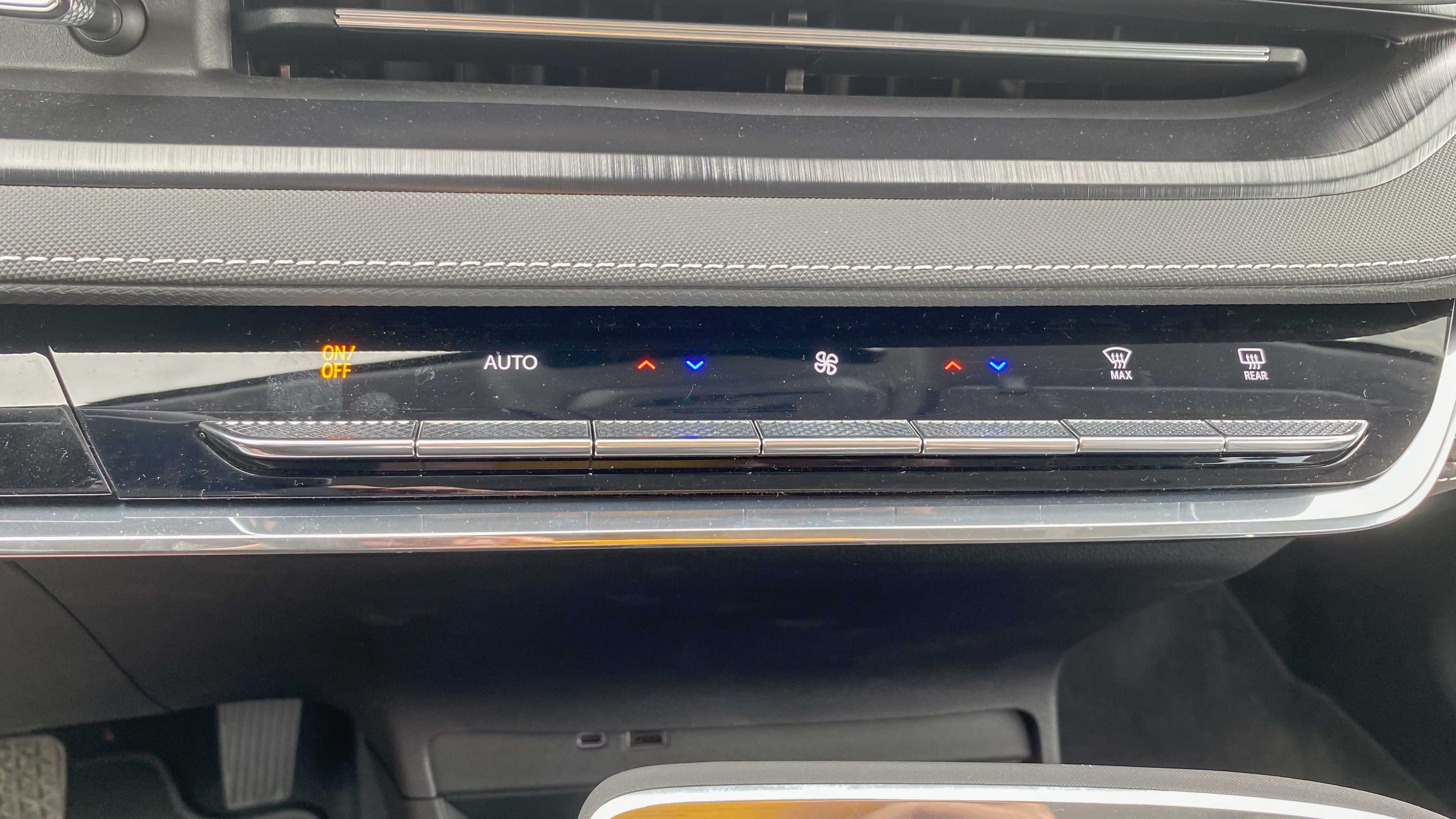
At the front-end of the central armrest area, there are knobs for controlling playback/pause and volume. Such a classic design should indeed be retained.
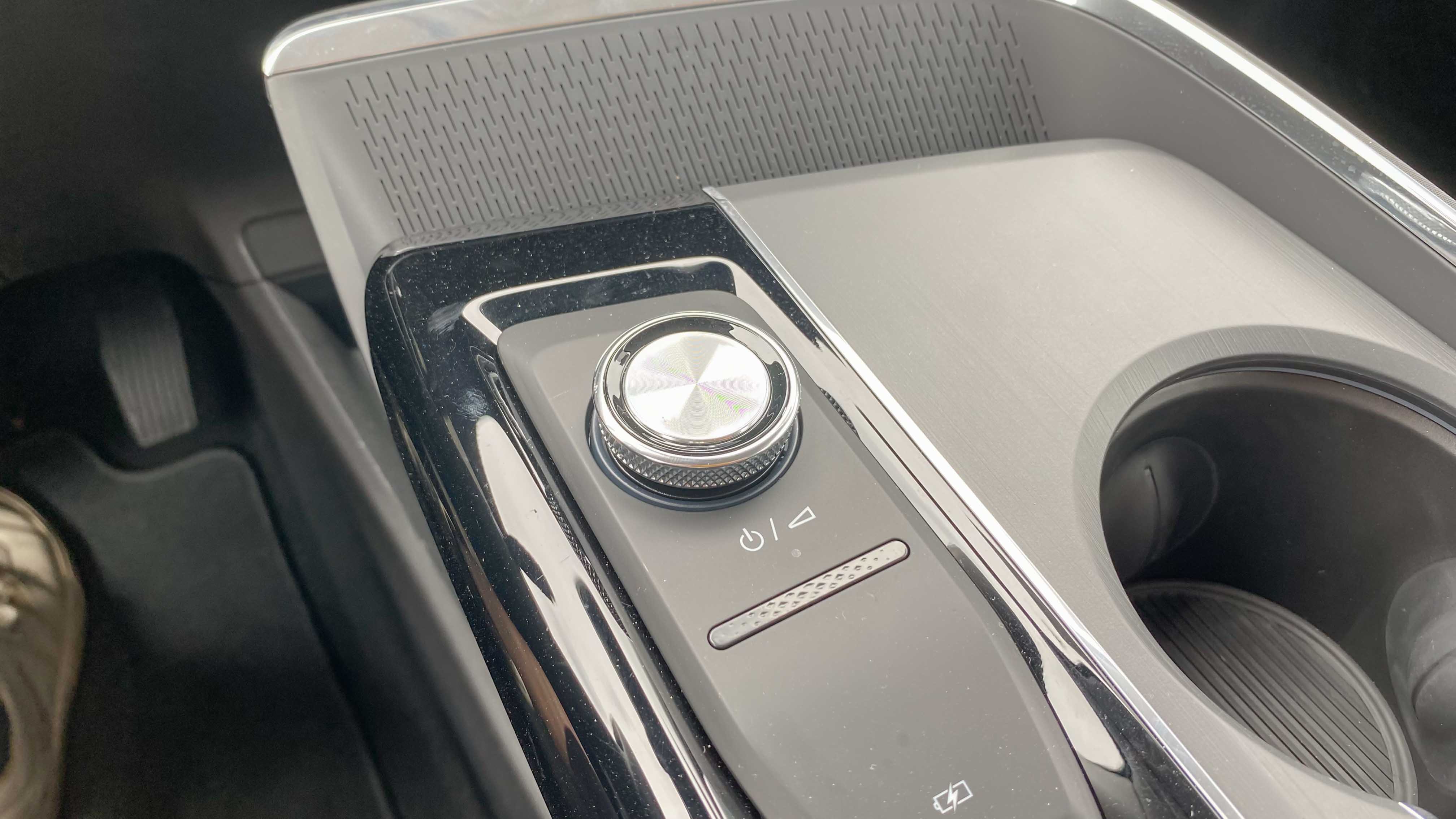
Inside the wireless charging slot, there is a silicone positioner to ensure that even during driving, the phone can always stick closely to the charging area despite any bumps. During the charging process, the indicator light at the front will also light up to clearly state the charging status. Also, although it cannot be photographed, there are venting outlets at the bottom, and the heat dissipation effect is very strong. Even the phone feels cold when it’s taken out after charging.

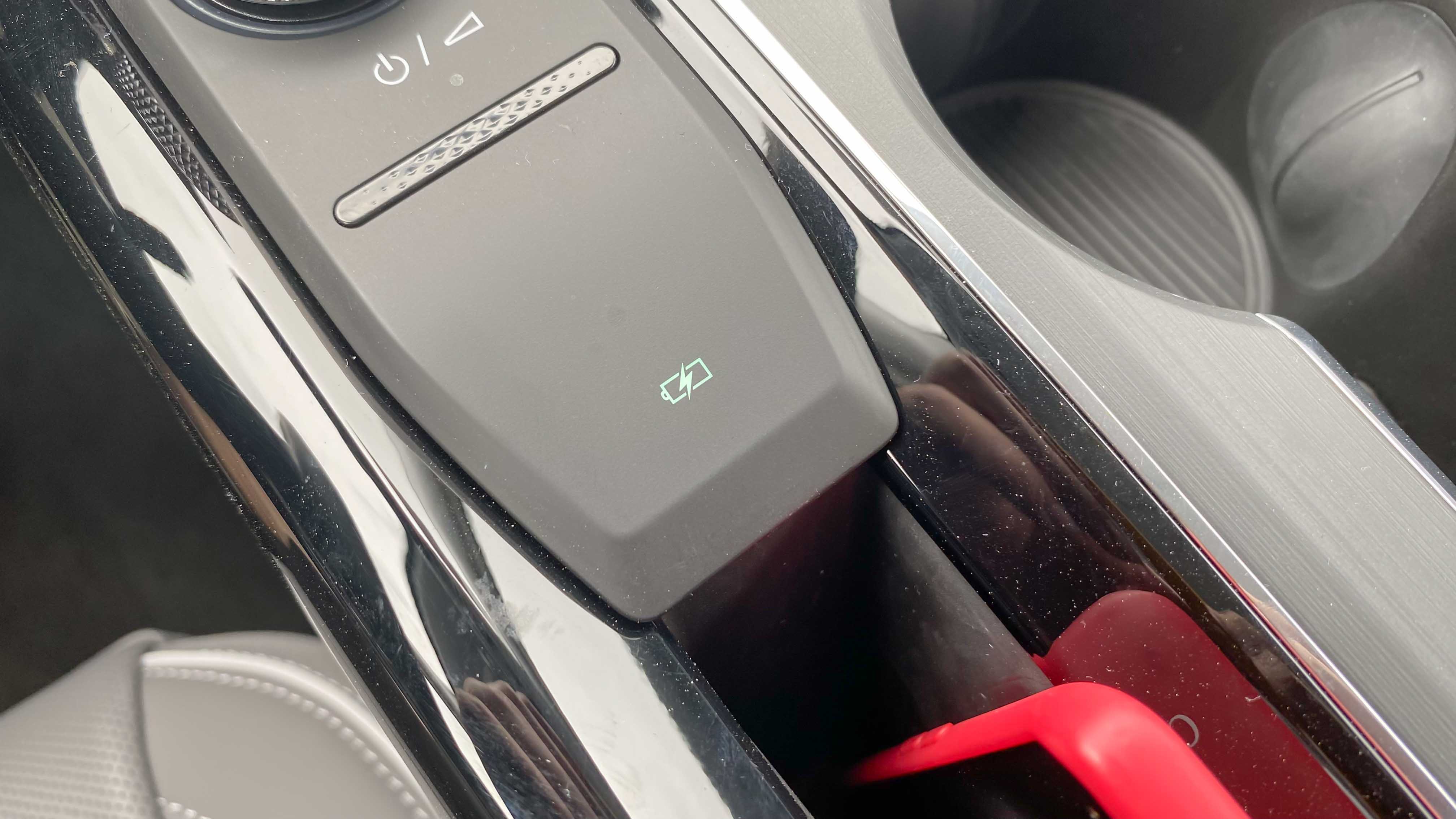 The central armrest box has ample space, managing to house all the mineral water bottles from the car, a satisfying eight, with room still available for some bills. The 12V fast charge port sits at the front of the box.
The central armrest box has ample space, managing to house all the mineral water bottles from the car, a satisfying eight, with room still available for some bills. The 12V fast charge port sits at the front of the box.

The hollowed-out storage area under the central console is also sizable, accommodating large items like high heels or handbags, or smaller trinkets like tissues with ease. There are a USB Type-C port and a USB Type-A port in front for charging.
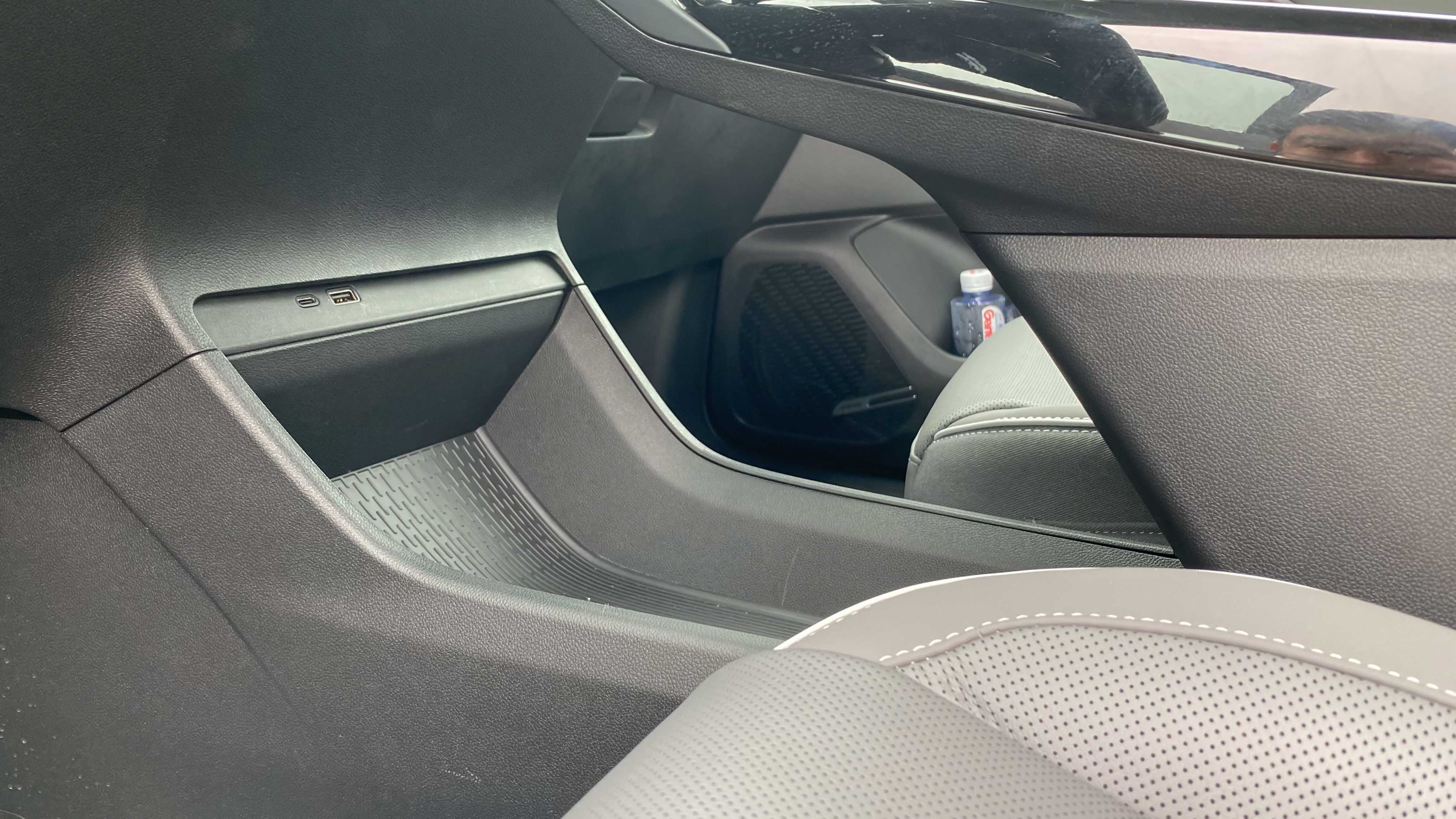
Most electric vehicle owners might only recognise the sunshade button among these three buttons adjacent to the front reading material, because the other two functionalities, opening the sunroof from the front or back, are absent in most EVs. That’s correct, E5 not only has a sunshade, the front section of its sunroof can also be opened!
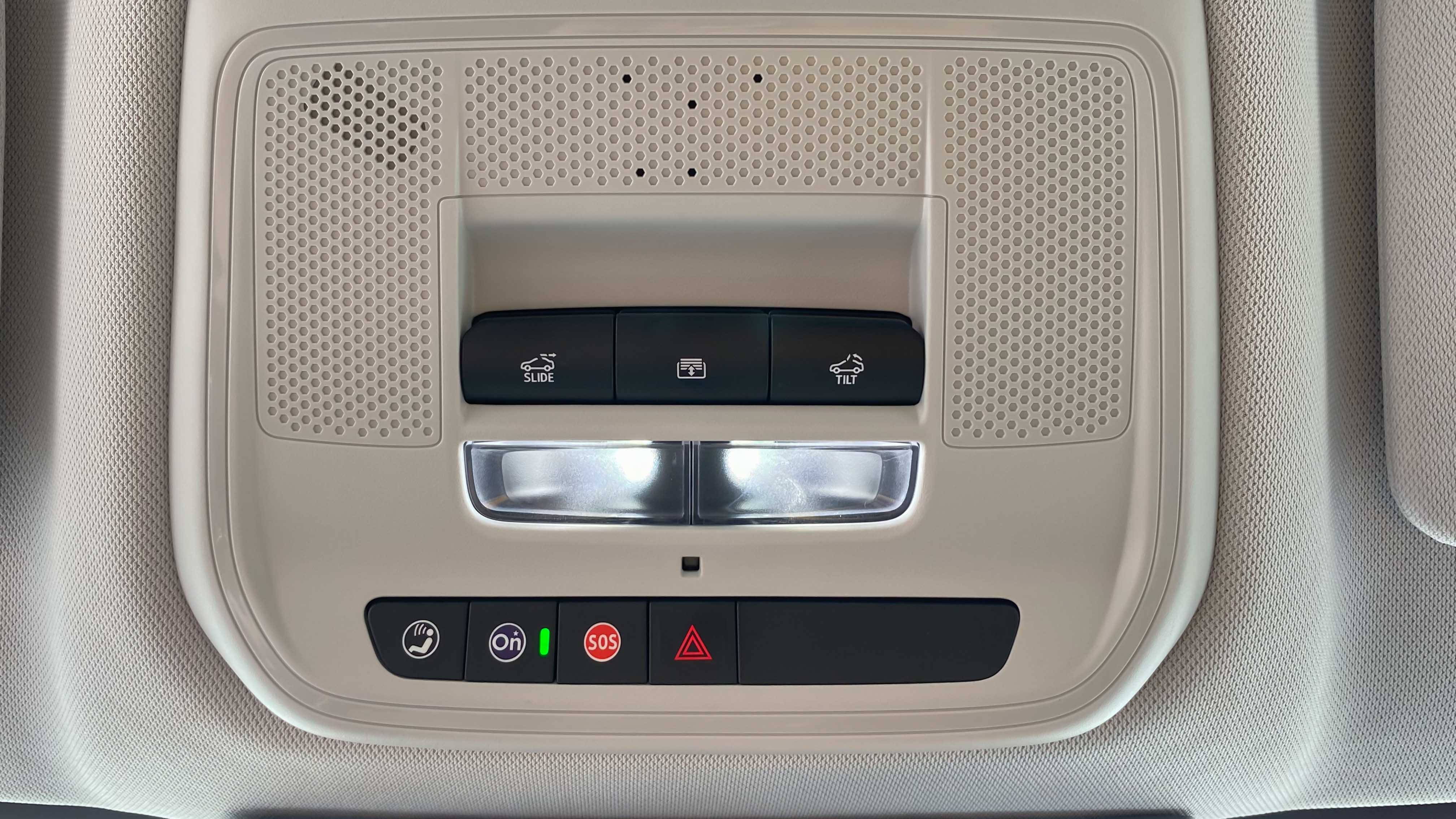
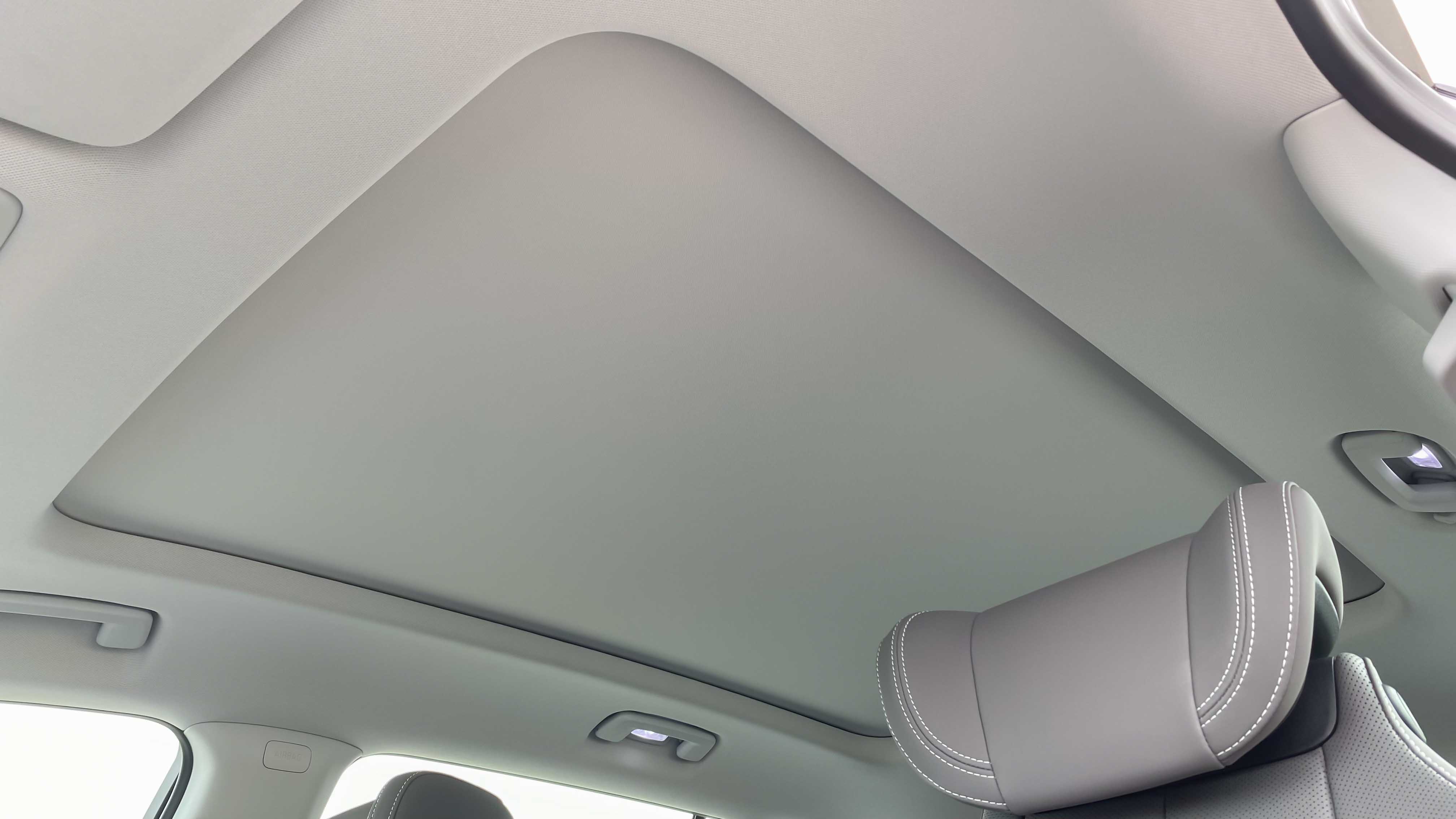
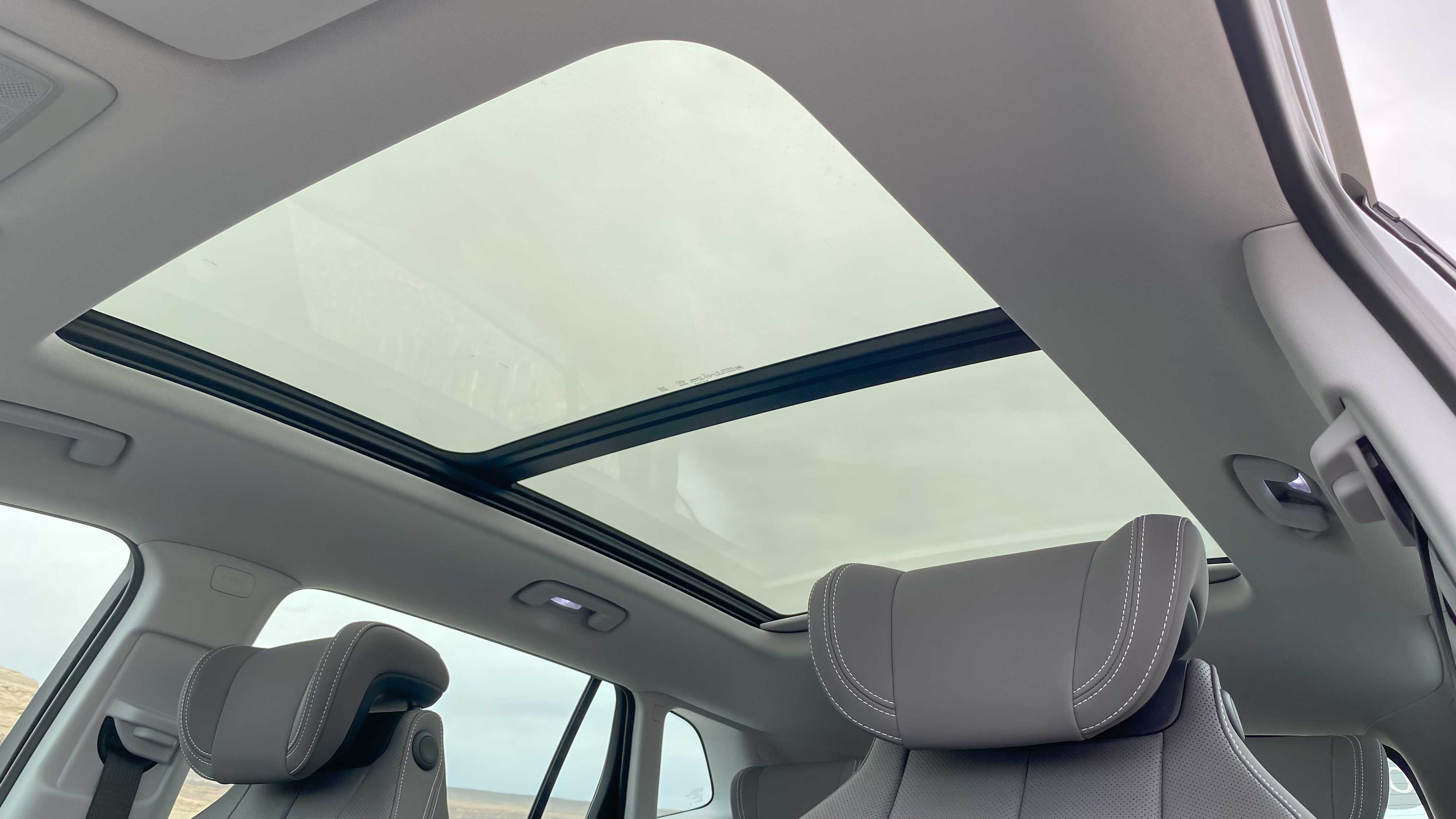
Being able to open the sunroof, regardless of how many find it useful, I feel it’s better to have it than not. For instance, in places like Xinjiang, you can park the car and open the sunroof to enjoy the scenery or capture unique angles, adding another dimension to the use case. Or, while resting in the car, instead of opening the side windows, you can just leave the sunroof a little ajar for adequate ventilation.
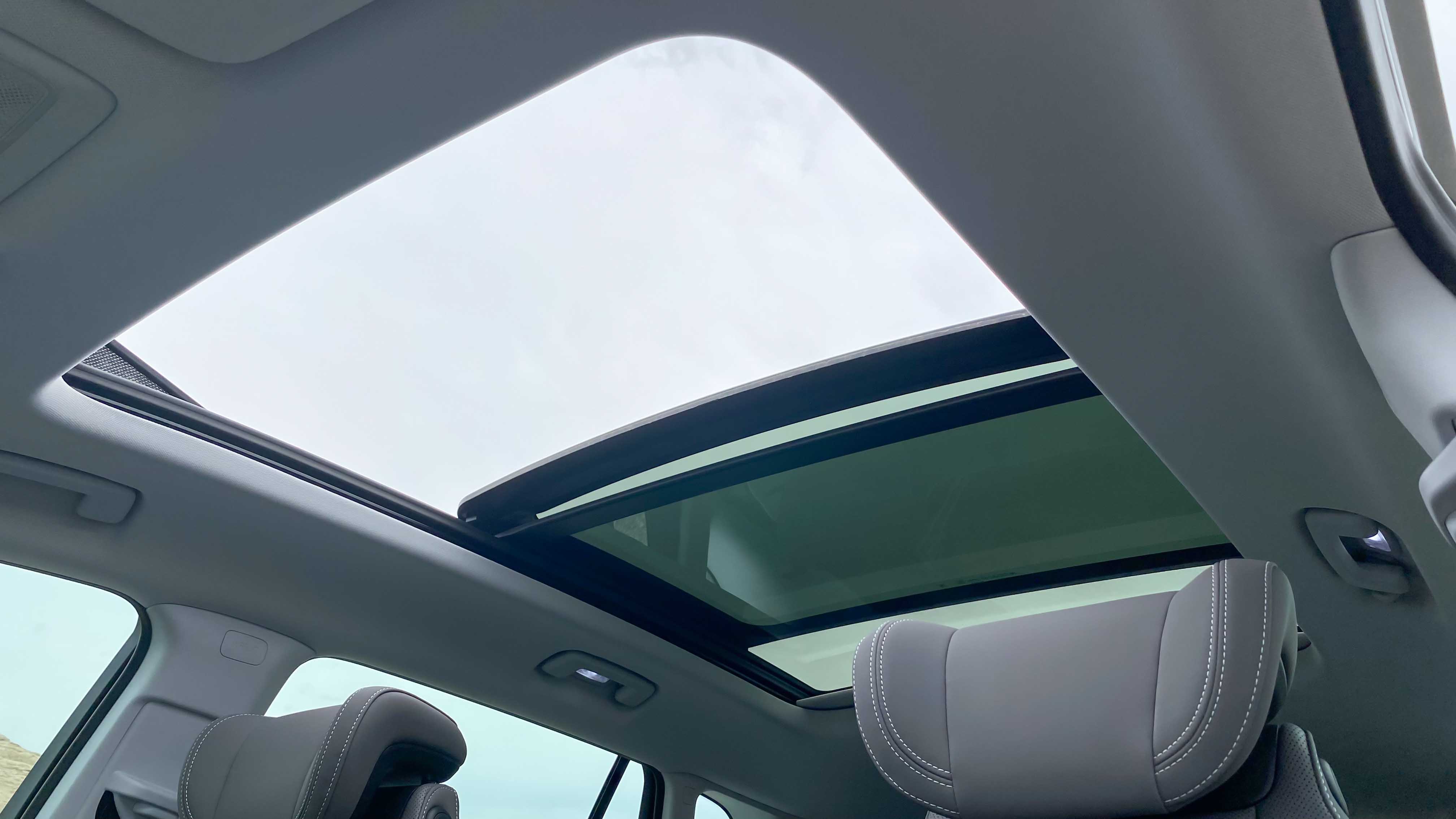
The end of the rear armrest box has two manually operated air vents. Below are both a USB Type-A and Type-C charging port. In my opinion, the A port is a necessity. Frequent travelers like me often carry a three-headed charging cable, typically with a Type A mother port for easy charging on trains or planes. If the car only has C ports, these cables would be useless.
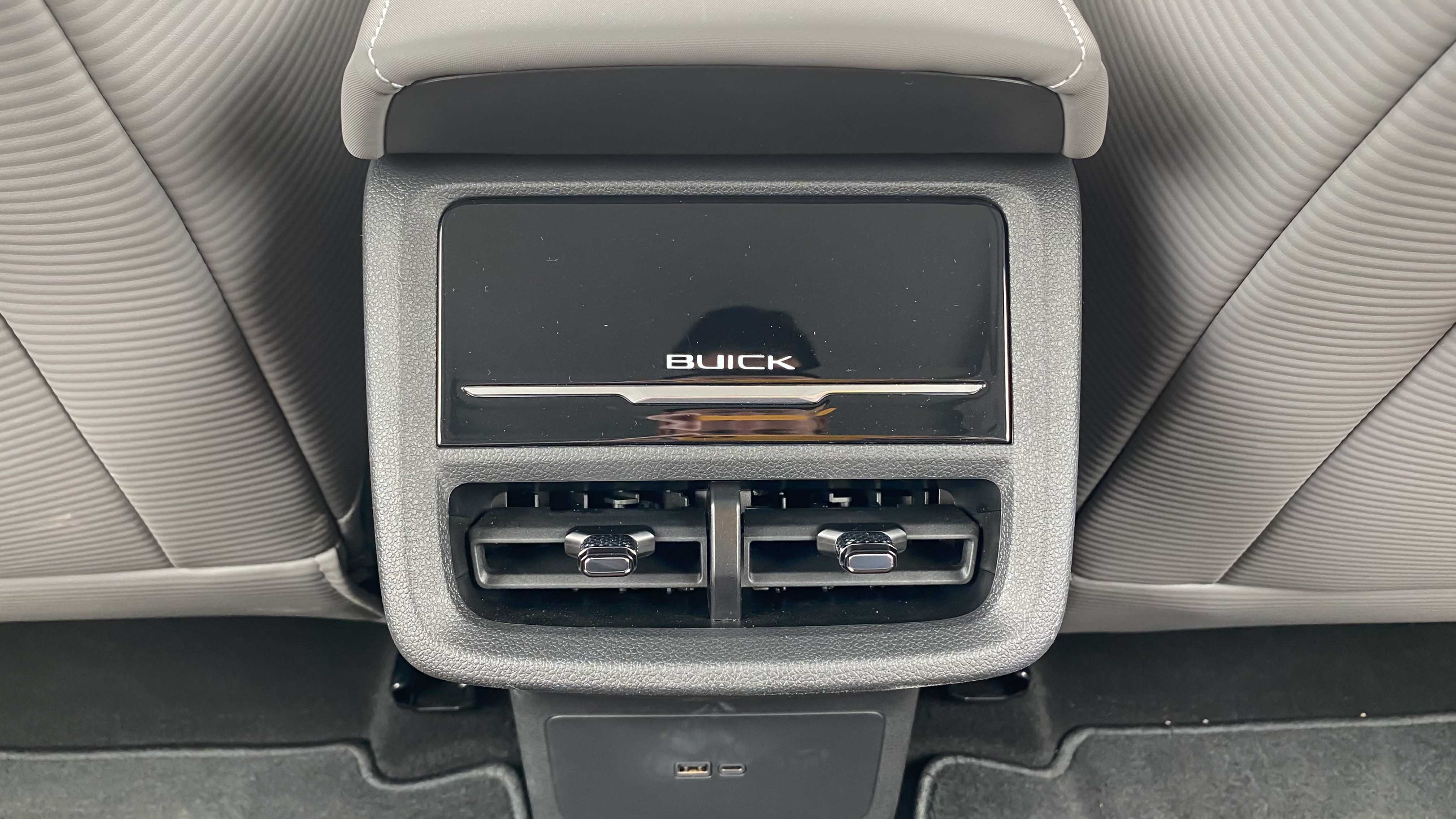
The back of the front seats has impressively spacious pockets, capable of holding 2 bottles of mineral water.
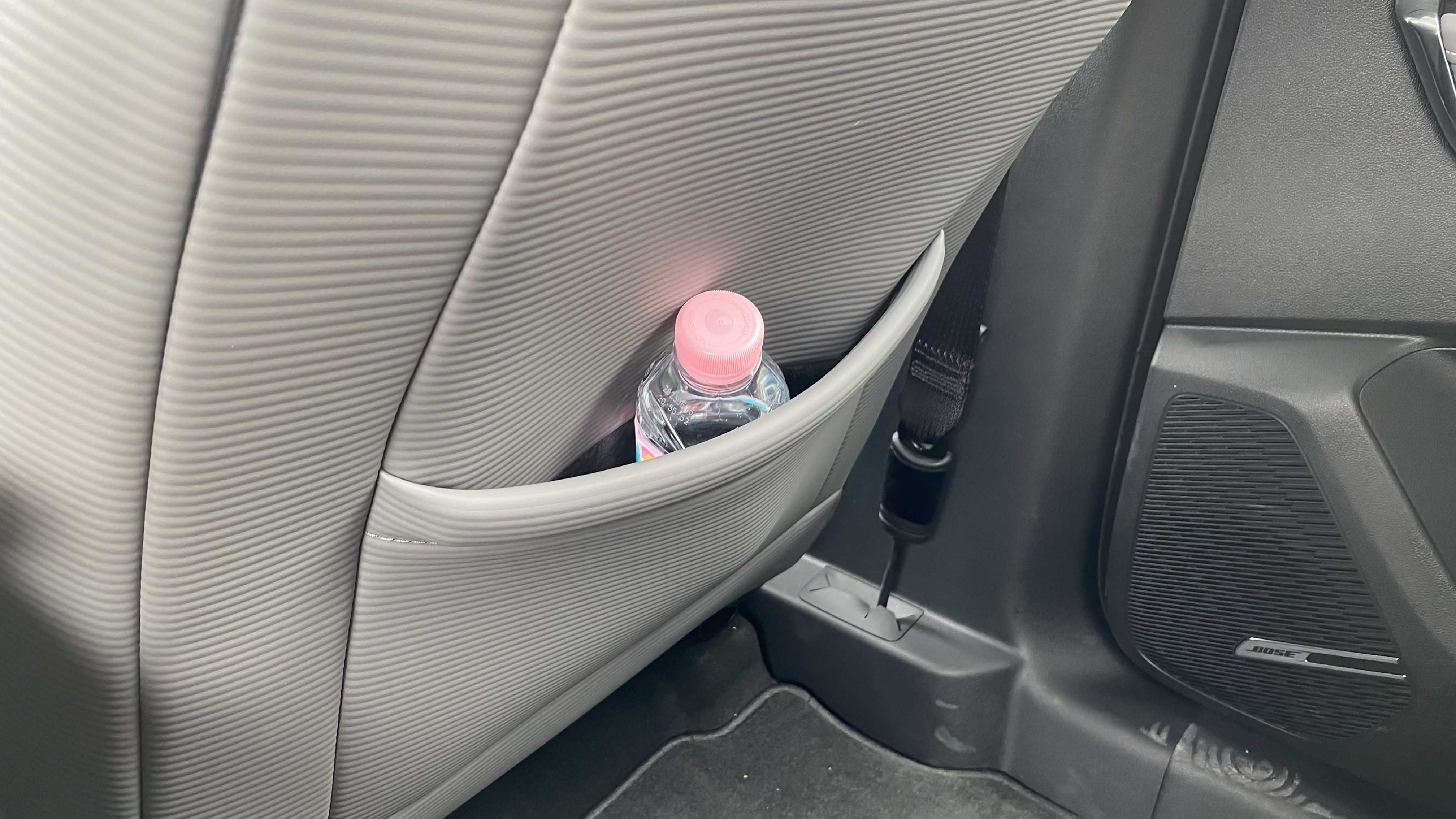 By now, it should be clear that the Buick ELECTRA E5 doesn’t just have an interior that befits its price point and an abundant internal storage space in line with its family car positioning, but also retains a large number of frequently used physical buttons, meeting the habits of fuel car users effectively.
By now, it should be clear that the Buick ELECTRA E5 doesn’t just have an interior that befits its price point and an abundant internal storage space in line with its family car positioning, but also retains a large number of frequently used physical buttons, meeting the habits of fuel car users effectively.
In the End
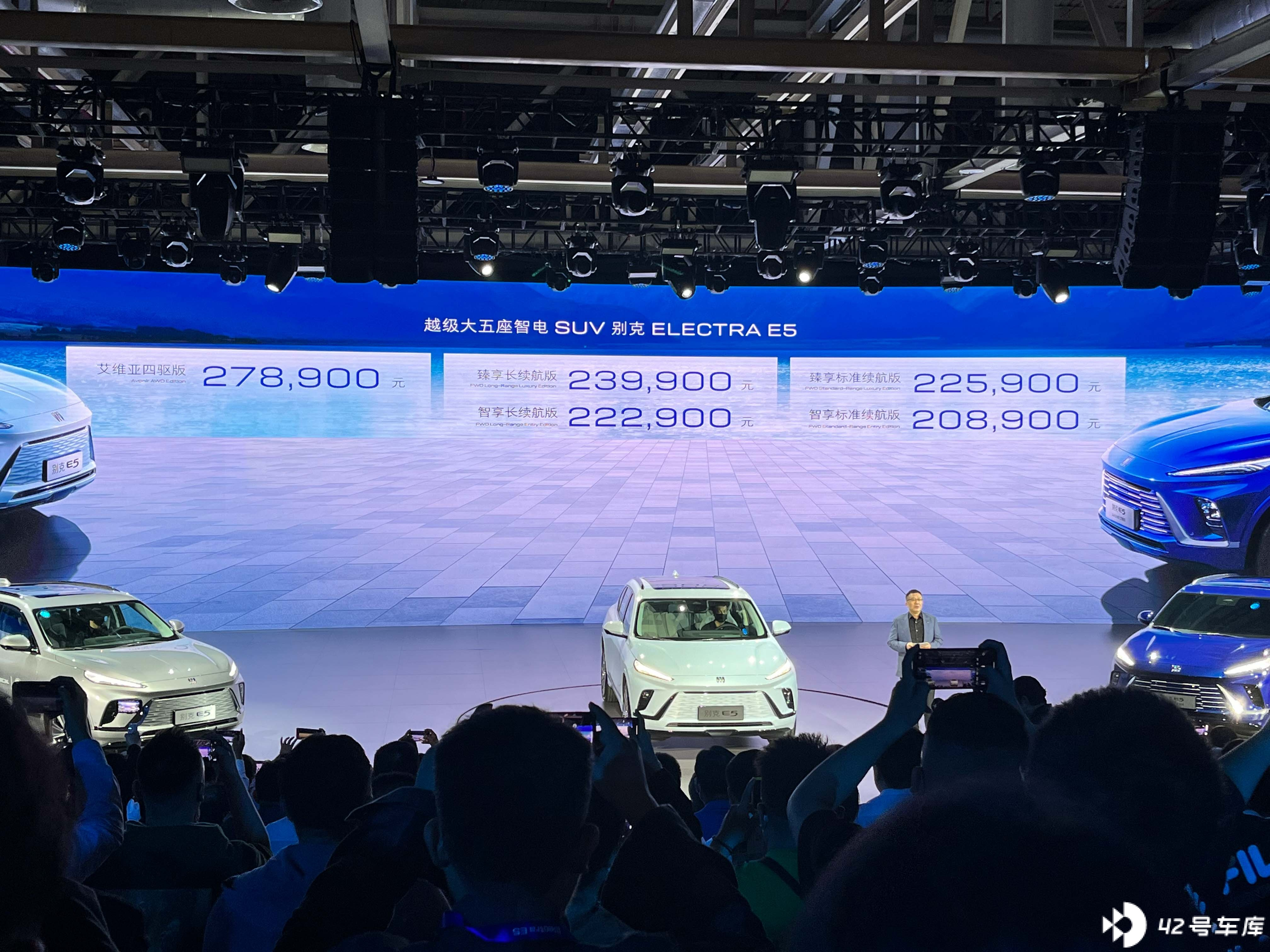
Upon its release, Buick ELECTRA E5’s starting price of 208,900 RMB indeed astounds – a rare sincere pricing Buick has finally introduced amongst joint venture brands. After experiencing this car deeply for two days, I just want to say, it’s incredibly worth it!
Exceptional energy performance, comfortable driving experience, leading passenger space in its class, great exterior and interior designs, comprehensive, balanced, bucket-like are without a doubt the core attributes of ELECTRA E5. Not to mention, these selling points align perfectly with what family car users truly care about.
Thanks to the Avenir platform, the Buick ELECTRA series shatters the common perception about Buick’s mild hybrid models, marking the first step in the brand’s new energy series relaunch. Moreover, it also establishes the fact that as long as the price-performance ratio is high enough, there will be no lack of buyers.
By the end of 2025, Buick will introduce three more Avenida models to us. It is exciting to imagine what excellent products Buick can offer us then.
This article is a translation by ChatGPT of a Chinese report from 42HOW. If you have any questions about it, please email bd@42how.com.
